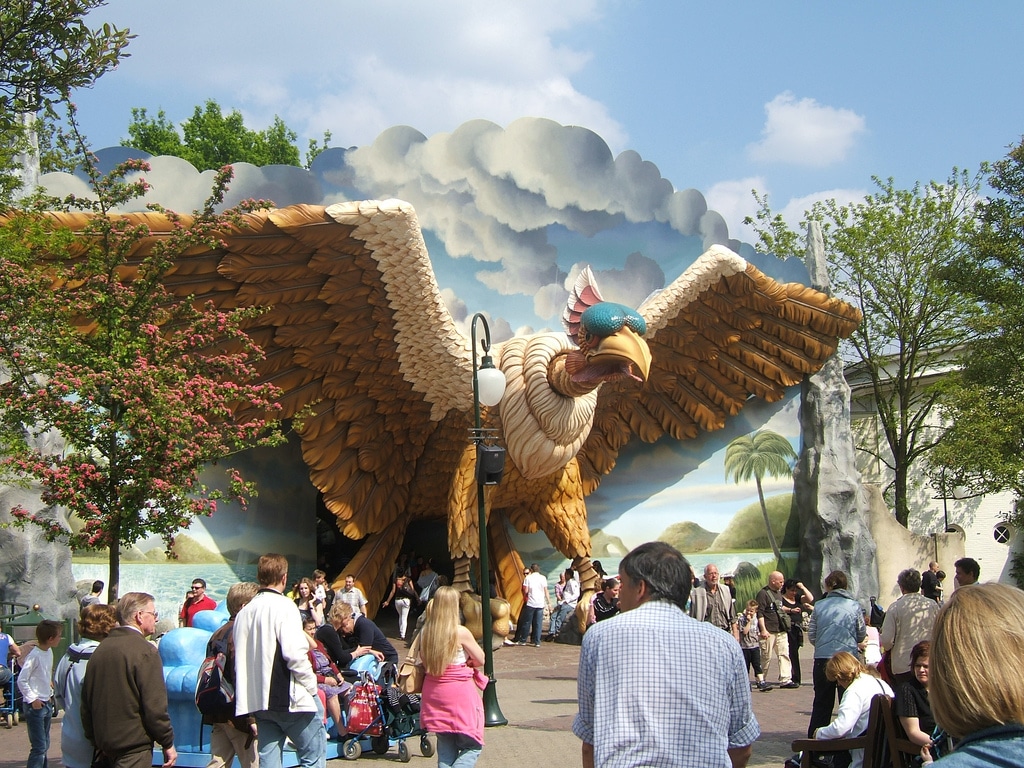During a 50-year project in the 17th century Amsterdam grew to four times its previous size, becoming the 3rd largest city in the world after London and Paris. Amsterdam is the capital city of the Netherlands but the Dutch parliament is seated in The Hague.
Central to that plan was the Canal Belt, a network of concentric canals that is now UNESCO listed.
Built on reclaimed land, Amsterdam is a feat of ingenuity, and still crackles with the ambition, cultural tolerance and enterprise that drove the 17th-century Golden Age when the Netherlands led the world in trade, maritime power, culture and economic might.
This is the city of Rembrandt, Anne Frank, the Red Light District, Johan Cruyff, and the Dutch East and West India Companies; there’s a world of fascinating stories, spellbinding art and architecture that has stood the test of time.
TIP: Get the I Amsterdam City Card for free attractions, discounts and free public transport. And consider this top rated Volendam, Marken & Windmill tour
1. Museumplein
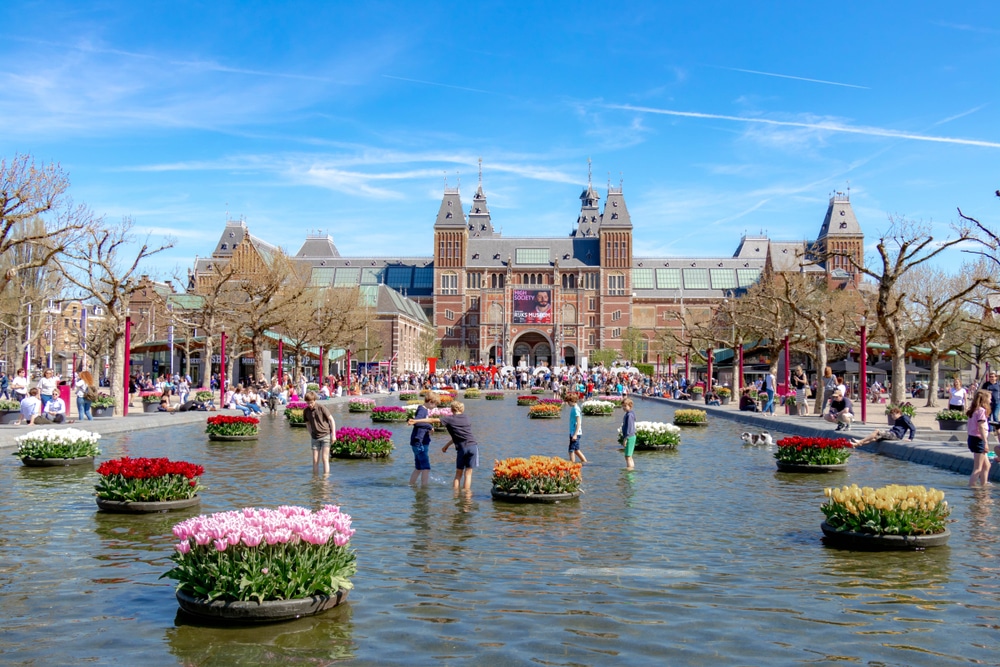
There’s more culture on this one square in the Museumkwartier than you’ll find in most other whole cities.
The Museumplein is in Amsterdam’s well-heeled Oud-Zuid district, noted for its plush properties, upmarket boutiques (Hoofstraat and Van Baerlestraat) and the city’s favourite park at Vondelpark.
So needless to say, we’ll keep coming back to this part of the capital on this list.
But your main goal has to be the grassy square and its cluster of world-beating museums.
The big ones all follow below, counting the Van Gogh Museum, the Rijksmuseum and the Stedelijk Museum, as well as the Concertgebouw, one of the world’s best places to watch a classical concert.
The area took shape in the 1880s after the construction of the Rijksmuseum, and the square was re-landscaped in 1999. There are outdoor events and celebrations on the square all year, including a skating rink from November to February.
2. Van Gogh Museum
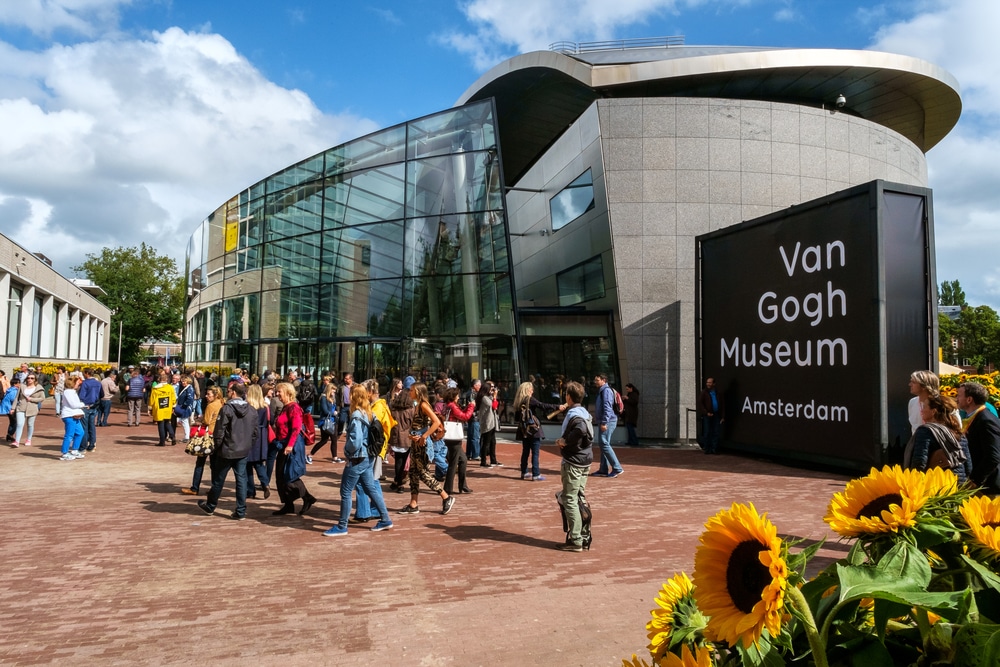
Opened in 1973, the Van Gogh Museum has the largest collection of works by Vincent Van Gogh in the world.
This includes 200 paintings, 500+ drawings and 750 letters, as well as pieces by contemporaries and influences like Rodin, Monet, Signac, Toulouse-Lautrec, Manet and Gauguin.
Van Gogh’s work is hung chronologically, presenting five different periods: Nuenen/Antwerp (1880-86), Paris (1886-88), Arles (1888-1889), Saint-Rémy (1889-90) and Auvers-sur-Oise (1890). There’s much to savour, but Sunflowers, Almond Blossoms, Bedroom in Arles and Wheatfield with Crows are indispensible.
With more than 2.1 million visitors a year, the Van Gogh Museum is the most popular museum in the Netherlands.
The advantage of booking a ticket with GetYourGuide.com is that you can skip the queue, heading straight for the blue lane at your allotted time, and spending a few hours under the spell of one of the great painters.
3. Rijksmuseum
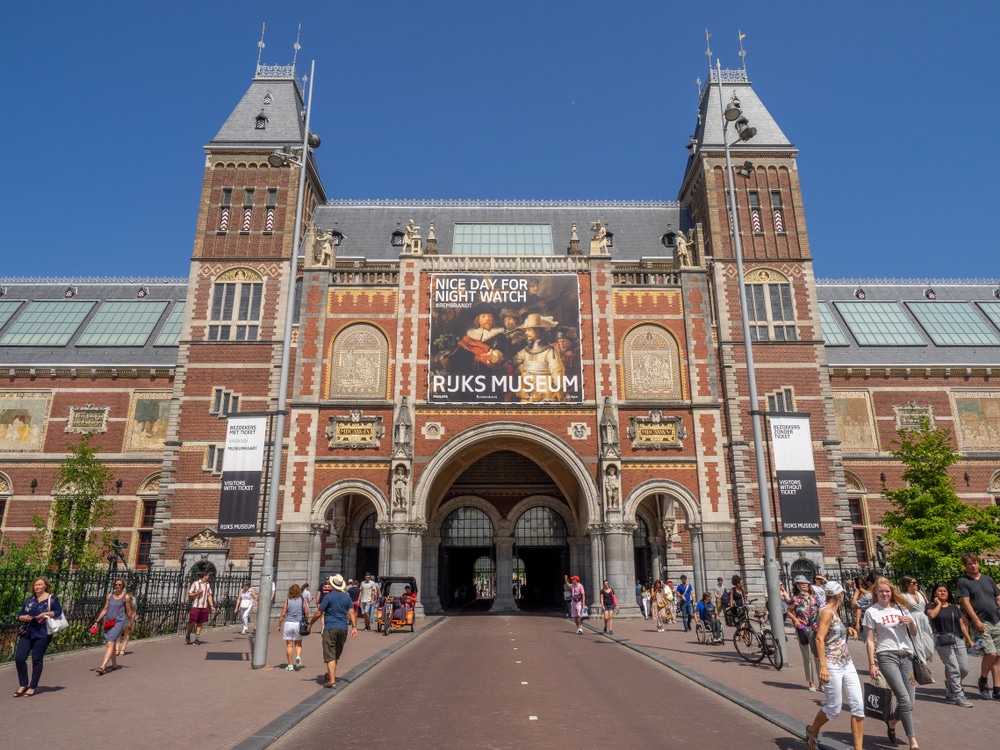
An extraordinary showcase for Dutch art, applied art and historical artefacts, the Rijksmuseum beckons you through 800 years of Dutch history at a purpose-built neo-Gothic palace.
Some 8,000 pieces are on show at any one time, and for many people the museum’s pinnacle is the collection of Dutch Golden Age paintings.
There are masterpieces like The Milkmaid by Johannes Vermeer, The Night Watch by Rembrandt and Portrait of a Young Couple by Frans Hals.
You can embark on adventure through Dutch culture and design, via Delftware, textiles, glass, armour, costume, sculpture and stunning 17th-century dollhouses.
Two exhibits that give a sense of the Dutch Golden Age are the Hartog Plate, the oldest known artefact of European exploration in Australia, and the stern of the HMS Royal Charles, captured in the Raid on the Medway in 1667. Like the Van Gogh Museum the Rijksmuseum is almost always busy, so pre-booking with GetYourGuide.com will let you skip the line.
4. Anne Frank House
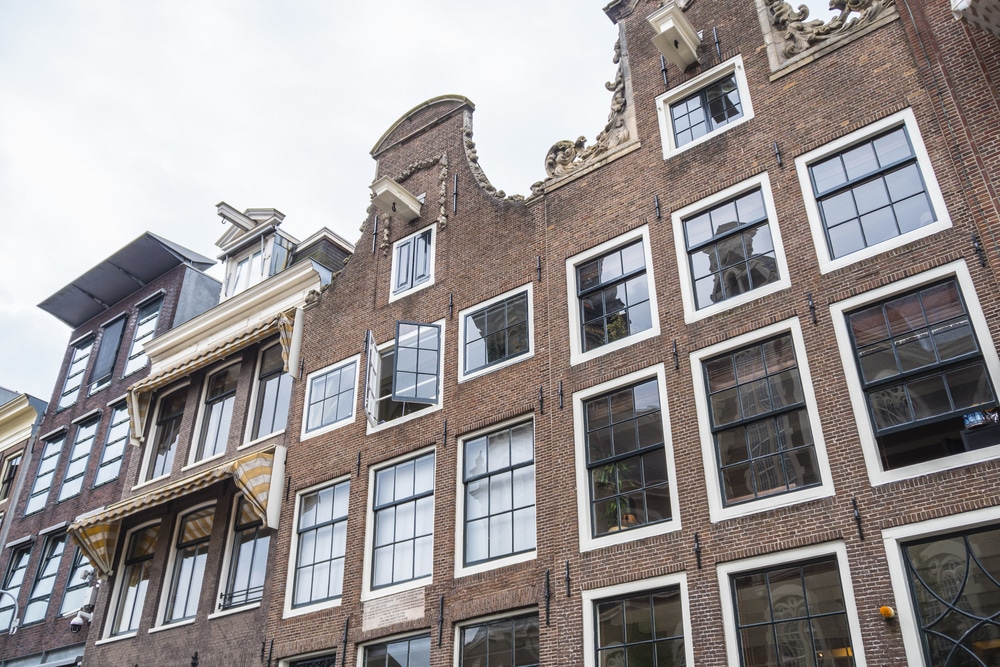
On the Prinsengracht, the Anne Frank House preserves the secret annexe where the young diarist Anne Frank hid from Nazi persecution from 1942 until she was captured along with her family and four other inhabitants in 1944. The rooms are on an enclosed courtyard behind a 17th-century canal house that served as the Dutch HQs of the spice and gelling companies Frank’s father Otto worked for.
Otto was the Frank family’s sole survivor after the Holocaust, and published his daughter’s diary in 1947. You’ll see the original copy of this defining work, as well as photographs and items belonging to the Frank family and the four other inhabitants of the annexe.
The secret rooms give a visceral sense of what it was like to live in hiding, while temporary exhibitions on persecution and fascism will inspire renewed vigilance.
Related tour: Amsterdam Walking Tour: The Fascinating Story of Anne Frank
5. Stedelijk Museum
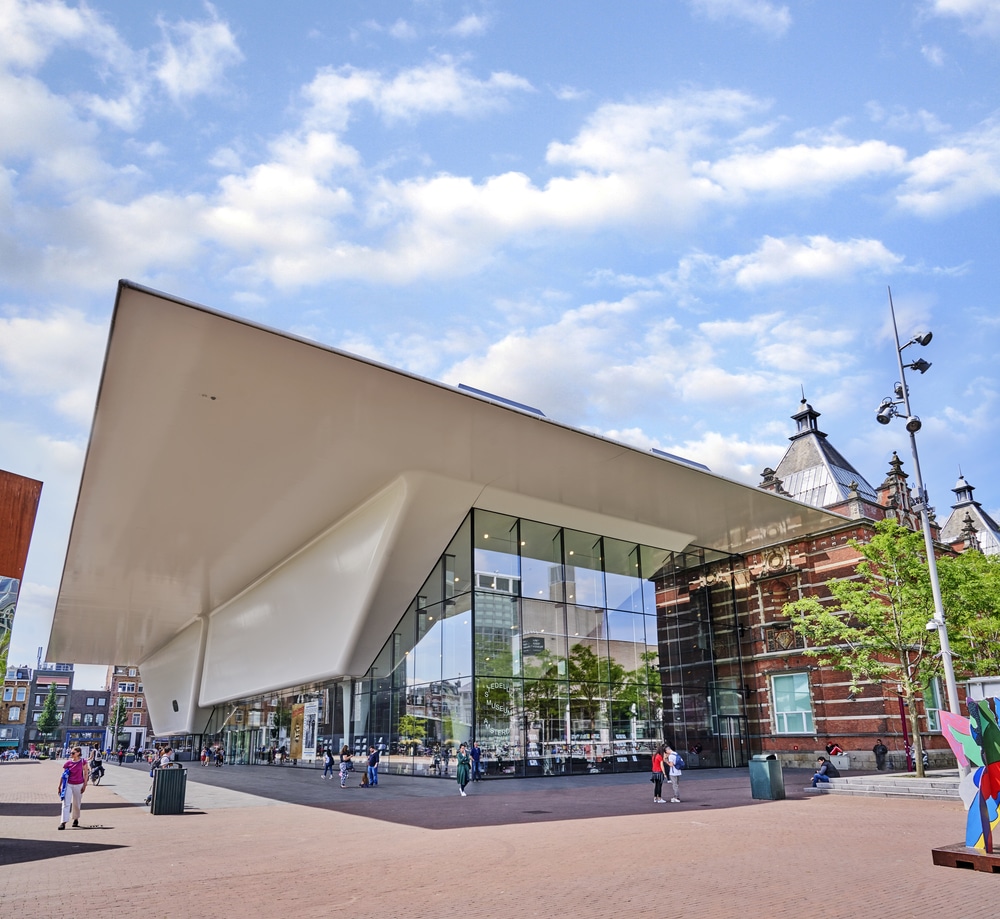
Open since 1895, the third of that trio of cultural giants on the Museumplein is the Stedelijk Museum, dedicated to modern and contemporary art, from Vincent van Gogh onwards.
All of the big art movements involving the Netherlands are represented, like Neo-Impressionism, De Stijl, Bauhaus, CoBrA and Pop art.
There’s painting, sculpture, installation art, video art prints, posters, graphic design and artists books.
You can feast your eyes on works by Piet Mondrian, Karel Appel, Willem de Kooning, Kandinsky, Cézanne, Chagall, Matisse, Andy Warhol, Jackson Pollock and Gilbert & George, to name a small few.
The late-19th-century main building was given a modern extension in 2012, nicknamed “the bathtub”, serving as the main entrance and making a big statement on the Museumplein.
Book online: Amsterdam Stedelijk Museum Skip-the-Line Ticket
6. Hire a Bike
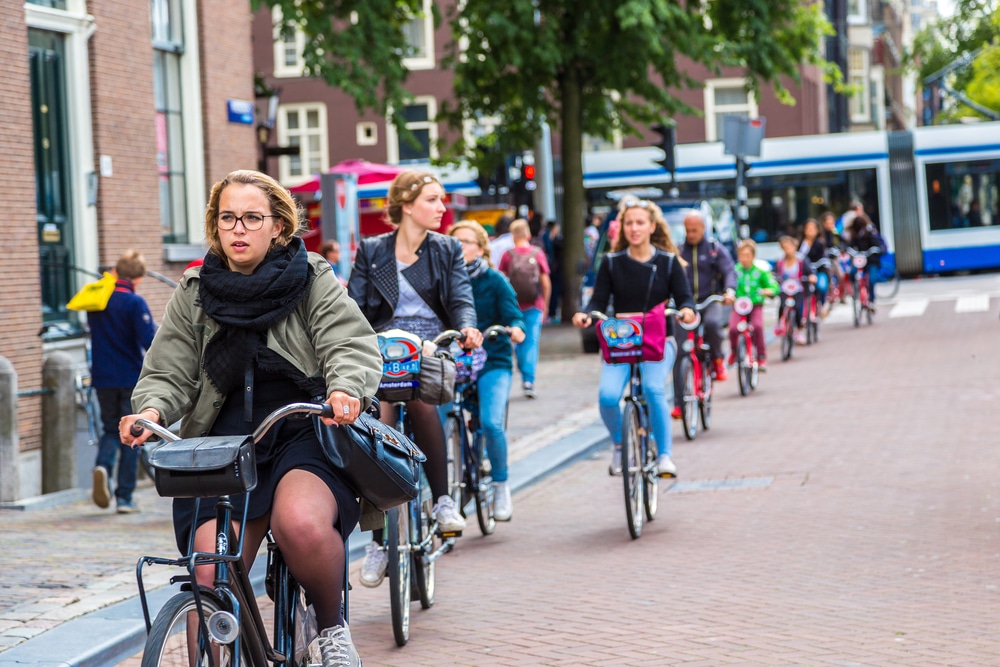
At 800,000 there are as many bikes as people in the centre of Amsterdam, probably the most cycle-friendly city in the world for its easy terrain and well-planned infrastructure.
Most streets have separate bike lanes, so you can get to wherever you want to go safely and quickly, and will feel like an Amsterdammer when you do it.
All ferries over the IJ allow you to take your bike on board for free.
You will not have to look hard for a rental centre, and MacBike, whose fleet is easily spotted by its red paint and logos, is the most widespread.
If you don’t want to look like a tourist there are plenty of companies with bikes purposely designed to help you blend in.
One rule to keep in mind is to cross tram tracks at an angle, because it’s easy to get caught in those grooves.
Guided tour: 3-Hour Guided Bike Tour of Historical Amsterdam
7. Vondelpark
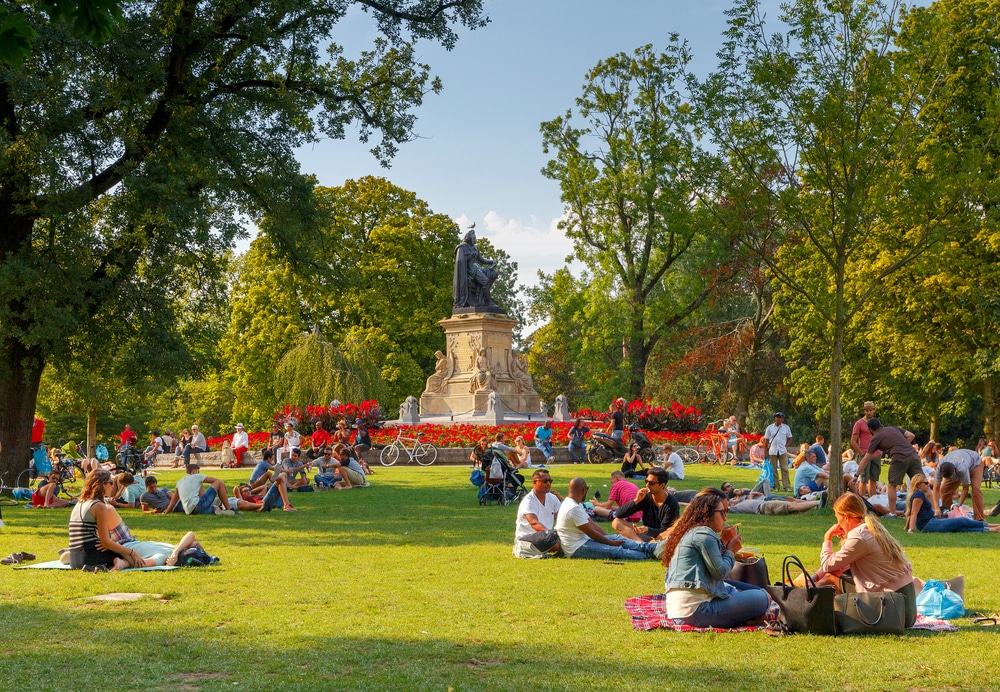
Amsterdam’s park of choice is a tranquil strip of ponds, undulating lawns and mature trees pushing west from the Museumplein.
A fun piece of trivia about the park, landscaped in 1865, is that it is constantly sinking, and needs to be renovated every generation to avoid it being completely inundated with water.
The Openluchttheater puts on a vibrant schedule of free live music, musical theatre and cabaret from June to August.
Although the performances cost nothing to watch, it may be worth booking online to reserve a place.
The rose garden in the centre of the Vondelpark was planted in 1936 and grows more than 70 types of rose, while the park has a sculpture, The Fish (1965) by Pablo Picasso.
A very respectable way to spend an hour or so is at the neo-Renaissance Vondelparkpaviljoen, built in 1874. There’s a cafe, Vertigo, in the basement, with seating on the terrace outside.
8. Herengracht
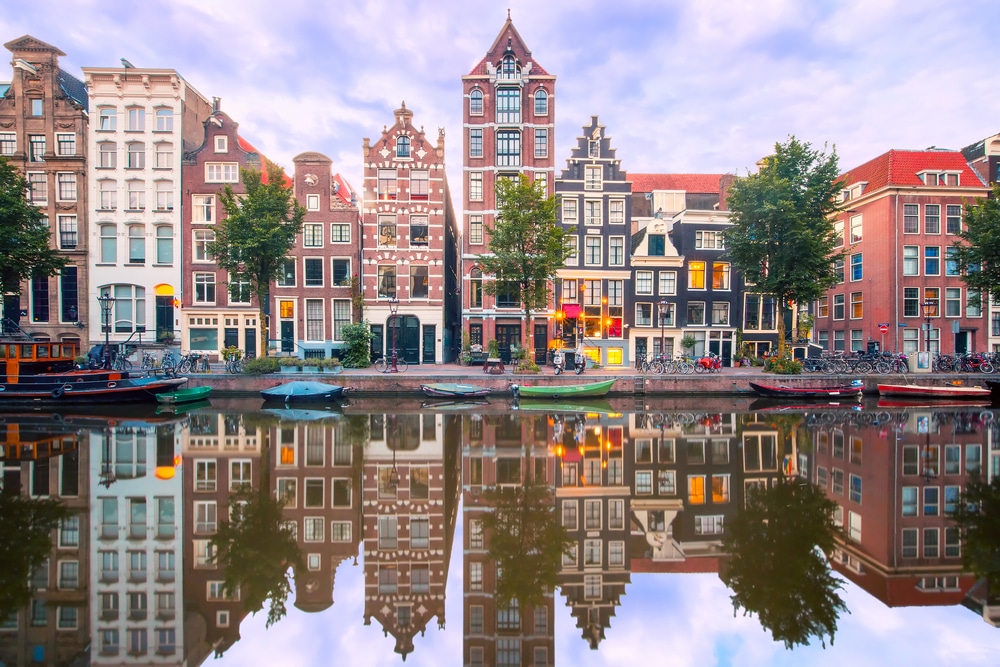
Patrician’s Canal in English, the Herengracht is the first of the four main canals in the city centre’s Canal Belt.
This waterway was completed along with its neighbours in the 17th century as part of an expansion project that is now UNESCO listed.
As the name may tell you, the Herengracht was where Amsterdam’s social elite built their grand gabled houses, and that sense of prestige has continued into the 21st century.
Take your time as there’s much to see, and almost every building is a work of art.
You’ll pass the former office of the Dutch West India Company at Herenmarkt and one of Amsterdam’s oldest residences (built in 1590) at 81. The magnificent Bartolotti house (1617) at 172, considered the finest of all of Amsterdam’s Golden Age merchant’s houses, while the Classical terrace of the Cromhouthuizen merits a photo at 364-70. The most desirable location for a self-respecting regent or mayor was the Gouden Bocht (Golden Bend) after Leidsegracht, developed after 1663 and now home to banks and insurance companies.
Related tour: City Canal Cruise
9. Museum Het Rembrandthuis
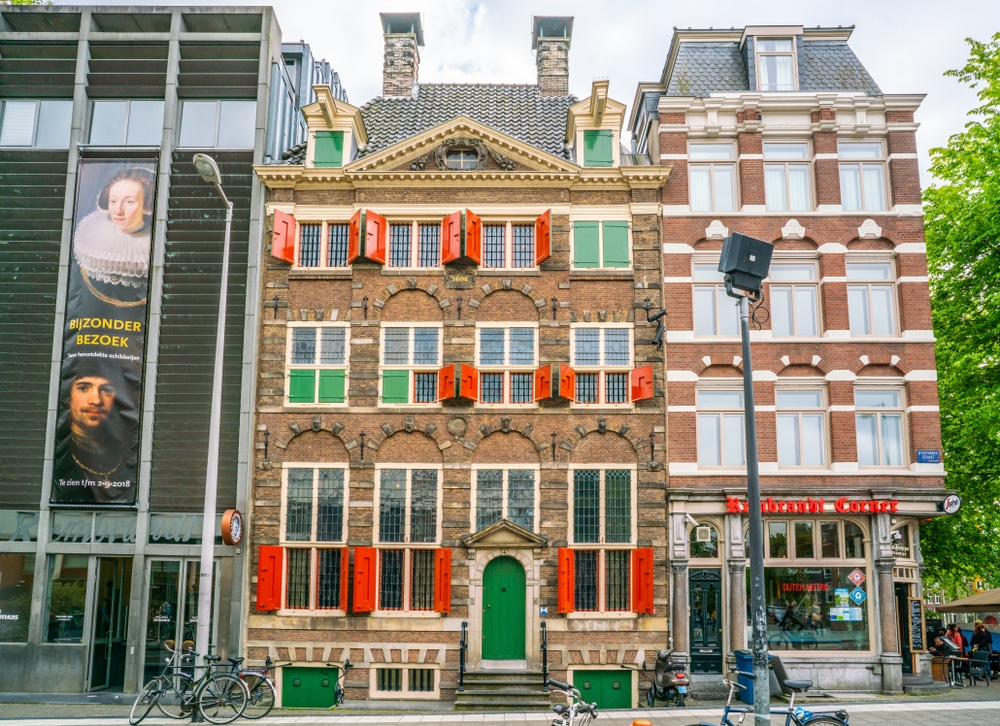
Amazingly, the house at Jodenbreestraat 4 where Rembrandt lived and worked from 1639 to 1658 has been kept as a museum to one of the masters of the Dutch Golden Age.
The house first went up in 1606 and was rebuilt around 1627. Come the early 20th century the building was in bad condition, but was restored by the eminent architect Karel de Bazel and opened as a museum in 1911. A new extension was built next door in the 90s, and this houses a huge collection of Rembrandt’s drawings and etchings, while the actual Rembrandt house reconstructs the artist’s living space and workshop.
There’s even an exhibition of broken pots found during an archaeological dig and dated to Rembrandt’s stay.
In 2010 the museum received its first painting by Rembrandt with the Tronie of an Old Man with Turban (1627-1628), followed by four panels from the series The Five Senses n 2017.
Ticket: Rembrandt House Museum Entrance Ticket
10. Jordaan District
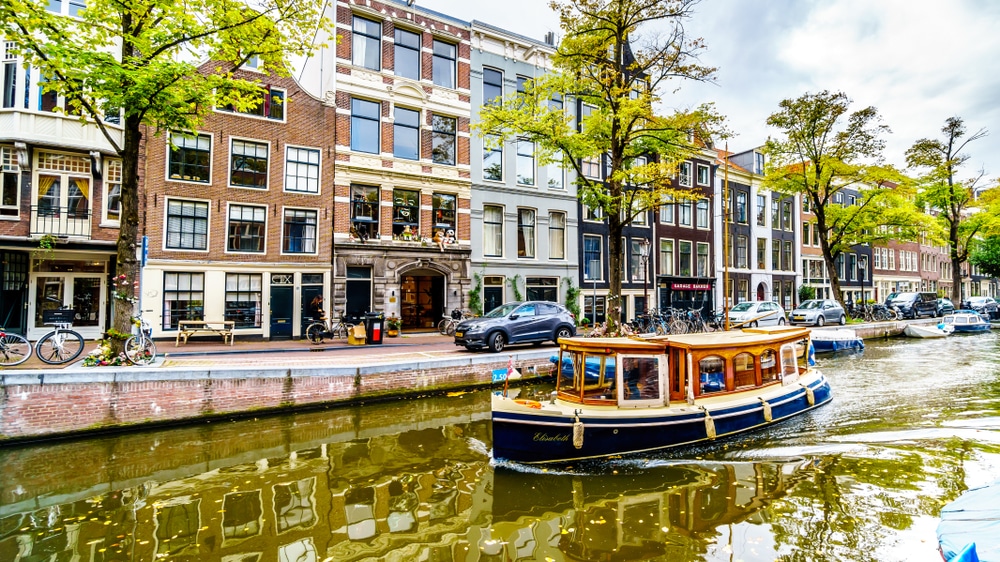
Whether it’s your first or tenth time in Amsterdam, you have to drop by this grid of little streets and filled-in canals bordered by the Singel.
Created during that great expansion in the 17th century, the Jordaan was first inhabited by Amsterdam’s working class and an international array of migrants, like Huguenots from France and Puritans from England, seeking the city’s famous religious tolerance.
Up to the 20th century the Jordaan was firmly a neighbourhood for the salt of the earth, as well as the radical left, and was gentrified in the second half of the 20th century to become a treasured shopping and nightlife district.
Explore the tight streets and sequestered courtyards, kick back at a snug little cafe, potter around the many specialty shops and galleries and visit the Noordermarkt for its organic farmers’ market on Saturdays.
De Negen Straatjes (nine little streets) are your first stop for boutiques, design shops and stylish bars.
Related tour: 4-Hour Food Tasting Tour of Jordaan
11. Canal Cruise
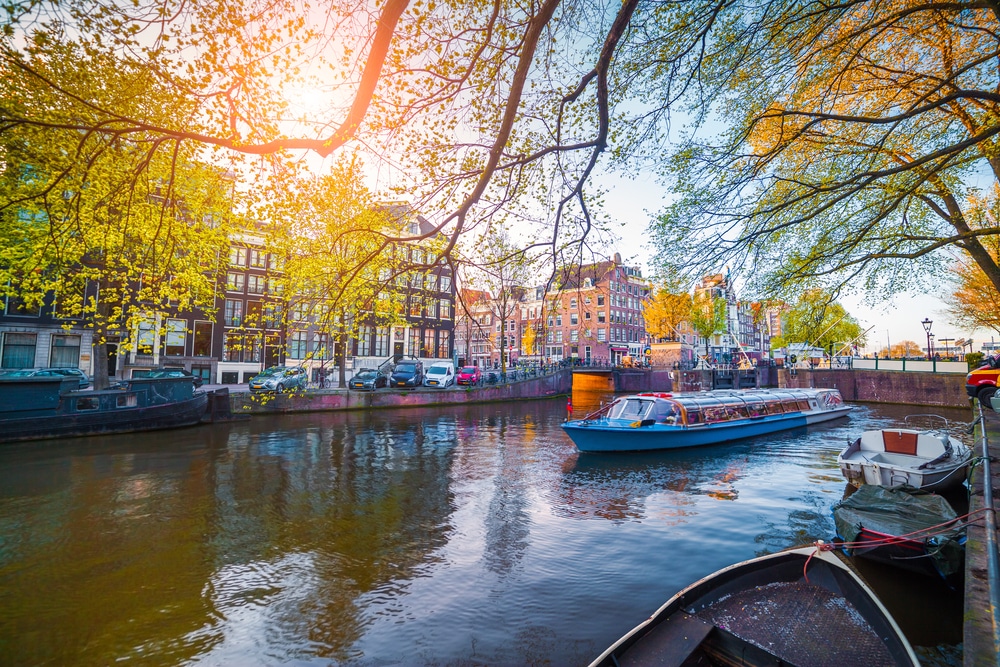
A canal cruise in Amsterdam is practically a cliché, but water is such an intrinsic part of the city that you have to get on board.
You’ll be granted the best views of those 17th-century merchant and patrician houses, the innumerable bridges, historic churches and cute houseboats.
Day or night, it’s an opportunity not to pass up; the only tricky part is working out which is the best cruise for you. GetYourGuide.com has an enormous choice, catering to all tastes.
Say you prefer more of a personal trip, there’s an hour-long guided cruise on a small vessel, or you can see sights like the Skinny Bridge and Golden Bend in lights on a 90-minute evening trip.
There are semi-open boat trips, in-depth cruises for people who want to see every inch of the canals, dinner cruises, unlimited drinks cruises, cocktail cruises and no end of combined experiences.
Tip: List of available Amsterdam Canal Cruises
12. Begijnhof
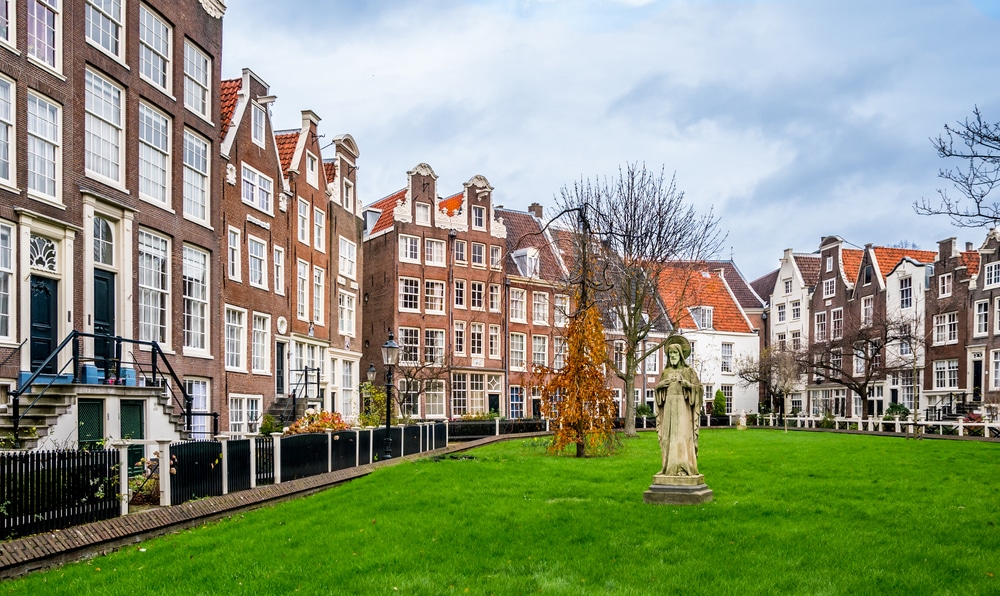
Founded sometime around the early 14th century, the Begijnhof is an enclosed courtyard established as a Beguinage, a community for lay religious women (beguines). Entered down a stairway from Spuiplein, it’s an oasis of peace, with a green wooded square surrounded by fine gabled houses.
As wooden buildings were outlawed in 1521, the Begijnhof was reconstructed in brick in the 17th and 18th century.
With one exception, Het Houten Huis (1420) standing on the southwestern frontage and officially the oldest house in Amsterdam.
Another of Amsterdam’s oldest monuments, the English Reformed Church, is also on Begijnhof, with roots as a 14th-century Catholic chapel.
You can also visit a hidden church, built behind the facades of a row of houses after public Catholicism was banned in the 16th century.
The last beguine passed away as recently as 1971.
13. Keizersgracht
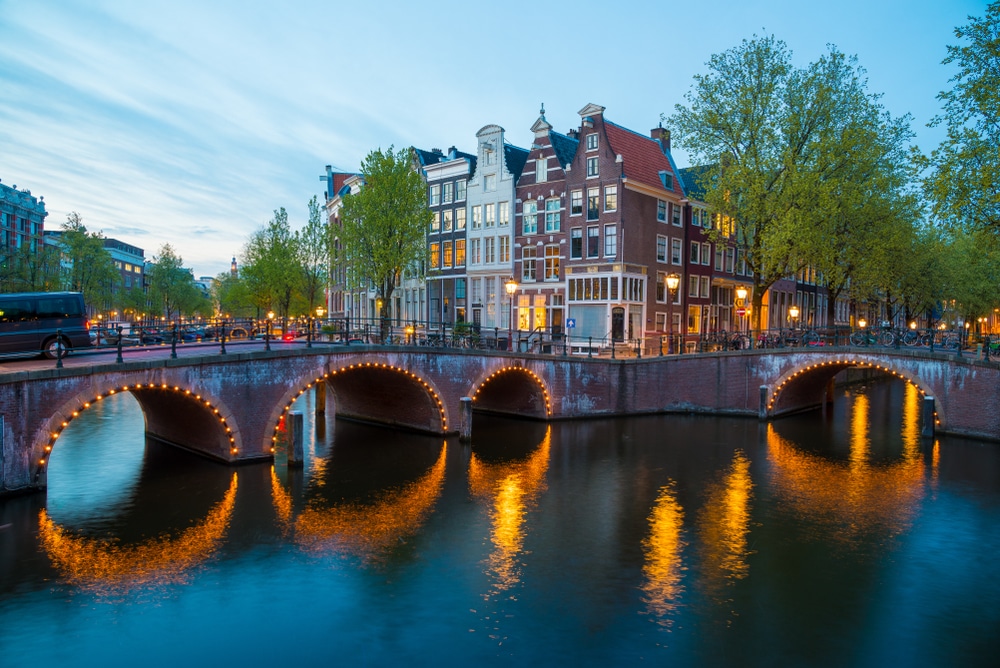
The widest of the three main canals on the Canal Belt, Keizersgracht is between Herengracht and Prinsengracht and named for Maximilian I, Holy Roman Emperor (1459-1519). If the canal freezes in winter, no boats are allowed to pass through, in order to help keep the ice intact for skaters.
As with Keizersgracht’s neighbours, it pays to be methodical as you make your way, so you don’t miss anything.
At No. 44 are the Greenland Warehouses (1620), easily identified by their three crow-stepped gables.
As many as 50,000 litres of whale blubber could be stored in the basements of these buildings, a far cry from their current role as luxury apartments! The distinguished House with the Heads (1622) at No. 123 is adorned with the heads of six Roman gods and goddesses, while Felix Meritis (1788) at No. 324 was built by the Enlightenment society of the same name and hosted performances by the likes of Mozart and Brahms.
14. Dam Square
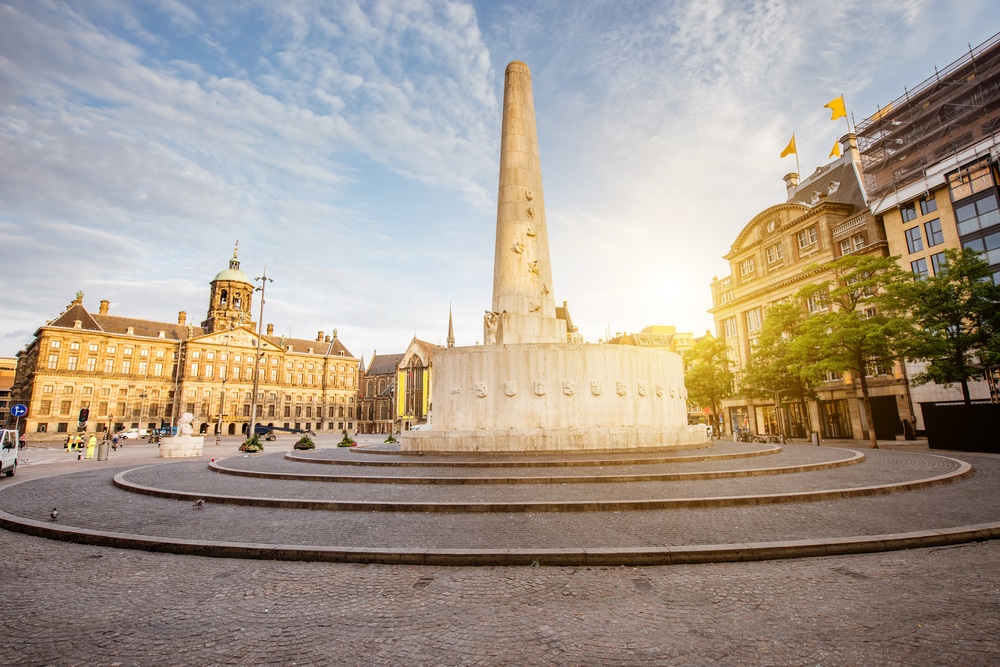
A square for the whole nation, Dam Square is traced by the Royal Palace, the National Monument (a remembrance obelisk from 1956) and the 15th-century Nieuwe Kerk.
Dam Square is at the point where the Amstel River was dammed in the 13th century, and was the scene of Amsterdam’s central market in Medieval times.
This space has a storied history, and not all of it is savoury.
Whenever there has been civil unrest, whether it was Anabaptists in the 16th century or students protesting the Vietnam War in the 1960s and 70s, Dam Square is the place where things have boiled over.
The last outbreak of violence was at the Coronation of Queen Beatrix in 1980, while there was a massacre on the square at the end of the Second World War.
On the lighter side, there’s a funfair on Dam Square for national occasions like Kings Day (27 April) and in the build-up to Christmas.
15. Prinsengracht
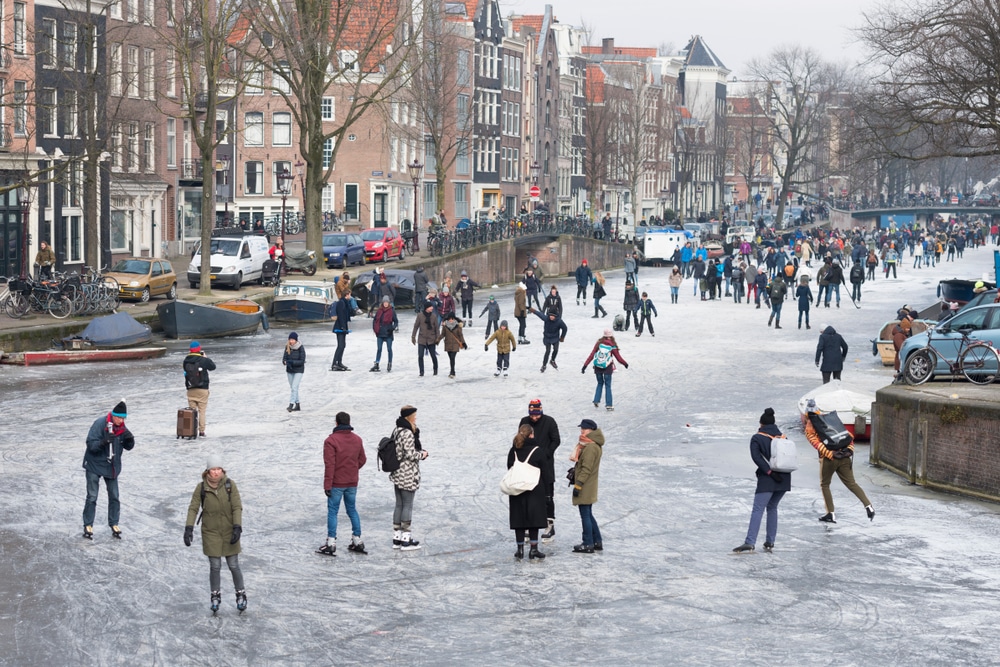
The third and outermost of Amsterdam’s three main canals is also the longest, and named for William, Prince of Orange, famed for his revolt against the Spanish.
Unlike the other waterways curling around the old centre, the Prinsengracht has traditionally been quite poor, in keeping with its location beside the Jordaan.
But there’s no lack of stunning Golden Age canal houses, joined by small workshops and dwellings, as well as rows of sweet houseboats on the water.
We’ve already mentioned the Anne Frank Museum, but there are also splendid 17th-century churches like the Noorderkerk and the soaring Westerkerk.
At No. 7 stands another of Amsterdam’s 14 hidden Catholic churches.
Also keep a lookout for the exceptionally narrow house at No. 245, just 1.4 metres wide (17th-century property tax was paid according to the width of a building). Every August the classical Prinsengrachtconcert is performed from a pontoon on the canal in front of the Hotel Pulitzer.
16. Singel
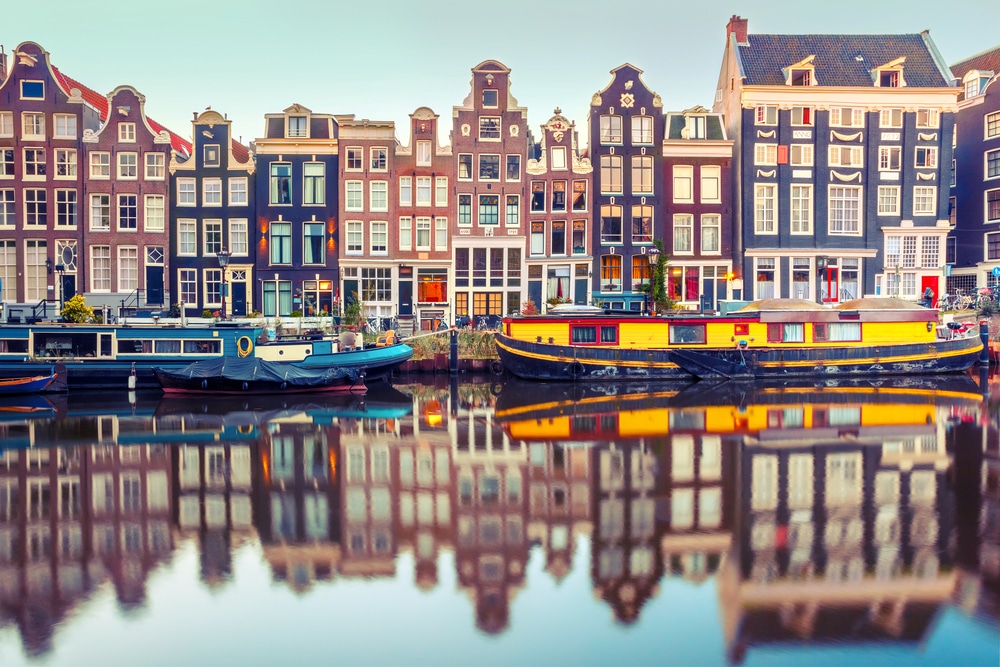
Unlike its neighbours the Herengracht and Keizersgracht, the innermost Singel is a canal that opens onto the IJ in the north.
In Medieval times this was Amsterdam’s outer moat, and was only used for shipping goods.
But in the 16th and 17th centuries the canal was widened and developed, and there are plenty of holdovers from the Golden Age on its refined banks.
It’s hardly surprising that Singel is one of the poshest parts of the city, with continuous rows of gabled canal houses.
Look for De Dolphijn at 140-142, built in 1600 and once home to Frans Banninck Cocq, the central figure in Rembrandt’s masterpiece, The Night Watch.
The Munttoren on the Muntplein, looming over the Bloemenmarkt, once belonged to one of the main gates in Amsterdam’s city wall.
17. Red Light District
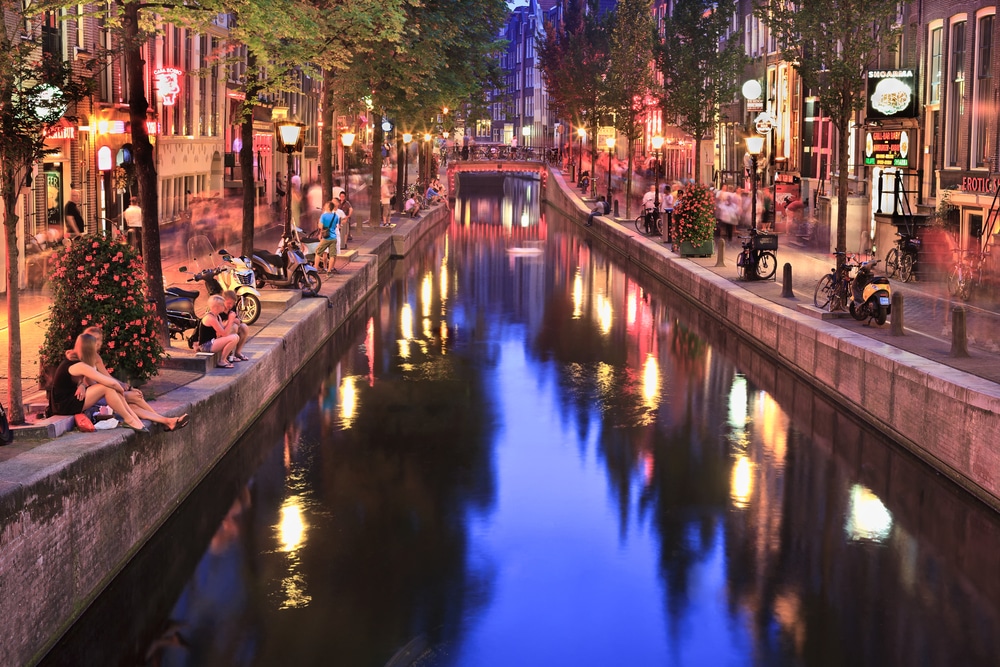
At Oudezijds Achterburgwal, amid a historic cityscape boasting the Gothic Oude Kerk and the chaotic Nieuwmarkt square, is the world’s most famous Red Light District.
A product of the Dutch tradition of tolerance, the Red Light District is a difficult place to describe.
Because on the one hand brothels, peep shows, sex shops and theatres cater for most urges, but on the other, everything is strictly regulated, video surveillance pervades the area, there’s a rigid code (no photos whatsoever) and sex workers even have their own union.
In all senses, it’s a remarkable place, and there’s an information centre to help you make sense of it.
The wider De Wallen area has much more to recommend it, like eccentric shops, galleries, international restaurants, rickety gabled houses and the oldest canals in the city.
Red Light Secrets is a museum where the area’s prostitutes tell their own funny, moving and human stories.
Recommended tour: Red Light District 2-Hour Walking Tour
18. Heineken Experience
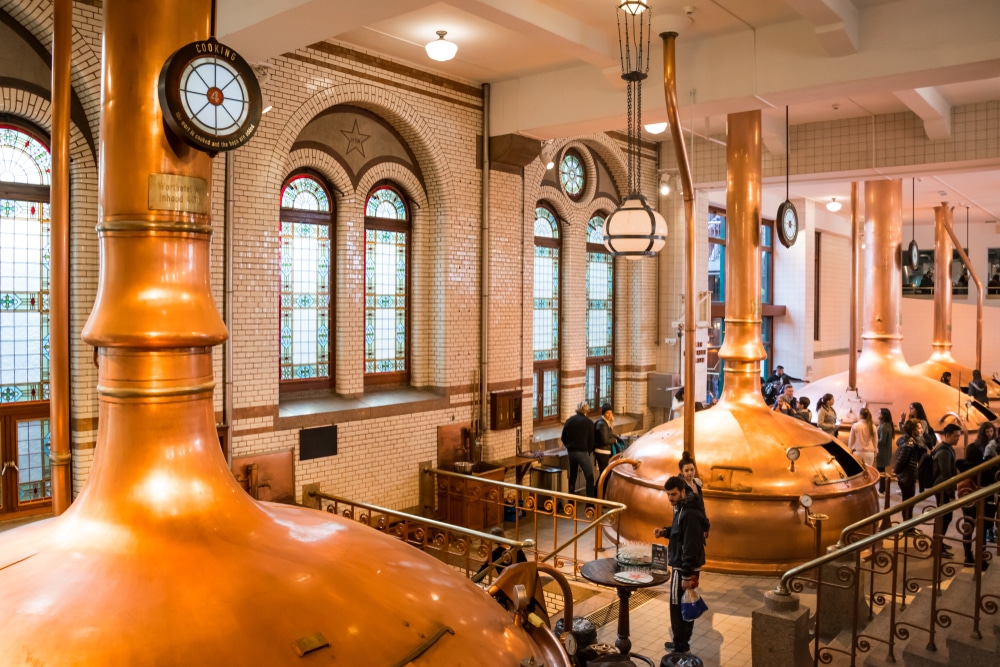
After Heineken moved home to a modern facility on Amsterdam’s fringes in 1988 the monolithic 19th-century brewery building in the De Pijp district reopened as a museum to one of the world’s favourite pilsners.
Over four floors, this has evolved into the Heineken Experience, which will tell you all about the brand’s origins, when a student of Louis Pasteur worked with Gerard Adriaan Heineken in 1873 to develop a special yeast.
There are brewing artefacts like vast copper vessels still in situ, as well as multimedia exhibits, a bizarre 4D ride when you’ll find out what it’s like to be brewed and bottled, and, naturally, a tasting bar.
Book online: Heineken Experience Ticket
19. NDSM Wharf
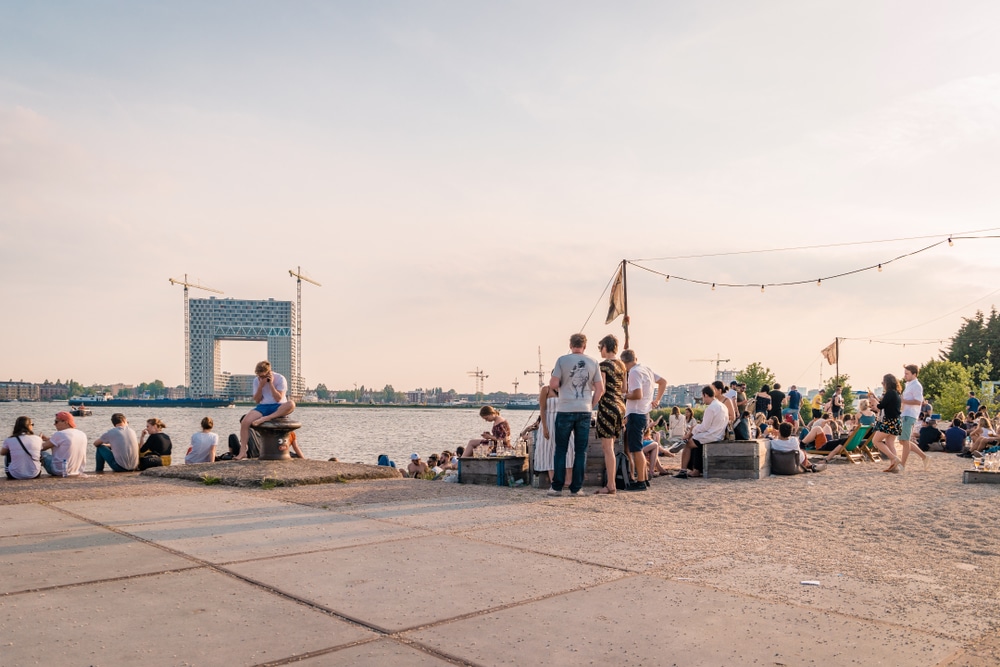
For an antidote to the tourist trail, this former industrial shipyard the size of ten football pitches on the north bank of the IJ has emerged as a whole cultural neighbourhood.
You can get there on the 906 ferry from the Centraal station, and one reason to make the trip is for the monthly flea market in the gargantuan IJ-hallen, thought to be one of the largest in Europe.
Everywhere at the NDSM Wharf, industrial remnants have been re-evaluated.
Take the waterside Pllek, where there’s a cafe in former shipping containers by an artificial beach.
For a night you won’t soon forget you can book a room at the Faralda Crane Hotel, literally a crane, but with three scenic luxury suites inside its column.
Be sure to keep one eye on the calendar for outdoor film screenings and annual events like the DGTL underground electronic festival in March.
20. Bike Tour
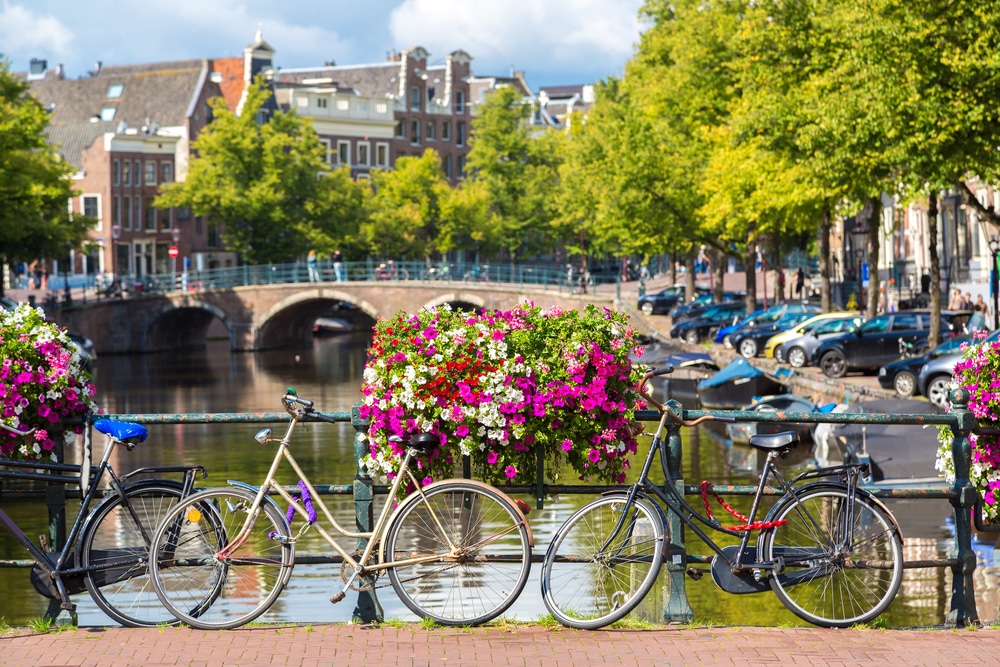
For the ultimate introduction to Amsterdam you can hop on a bike and take an all-encompassing three-hour tour of the city.
With GetYourGuide.com you can book this trip past the world-renowned canals and via all the sights that you can’t leave out of a first-time trip to Amsterdam.
So the Van Gogh Museum, Anne Frank House and Jewish Museum are on the itinerary, but because you’ll be in the company of a knowledgeable Amsterdammer you’ll also see things and hear stories that you might otherwise have missed.
Tours are given in English, French or German.
21. Ons’ Lieve Heer op Solder
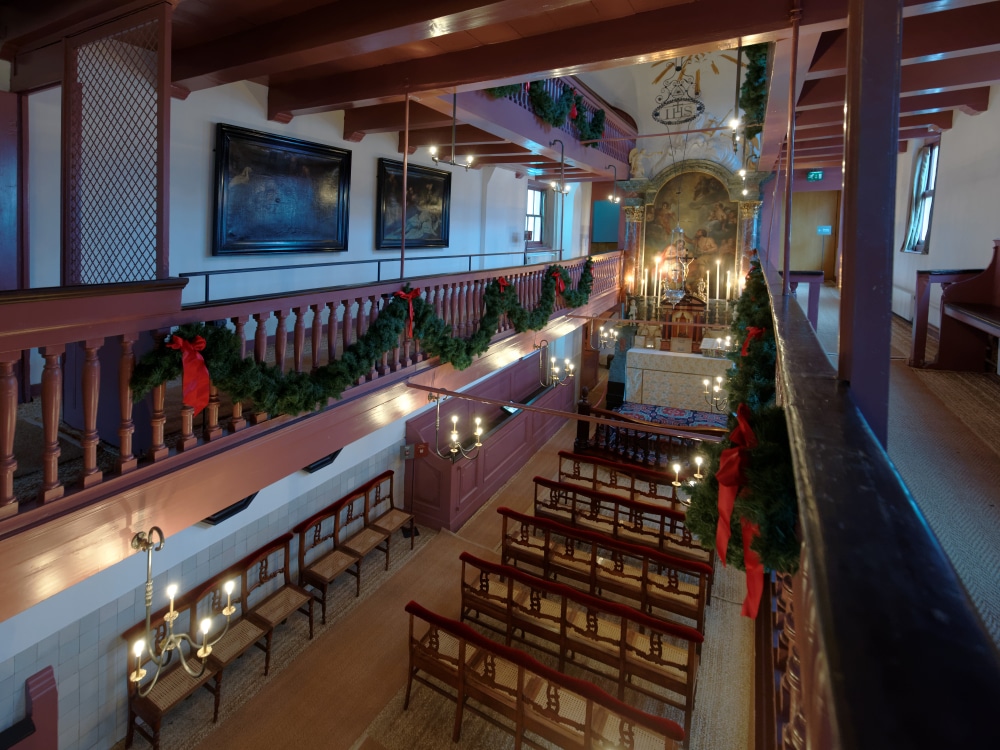
We’ve mentioned how, post-Reformation, Catholicism became a more secretive practise in Amsterdam, and at this 17th-century canal house you can visit a real Schuilkerk, or clandestine church.
In English, the name is “Our Lord in the Attic”, which as you can tell makes up the top three floors of this magnificent residence.
By the 19th century it had ceased to be used as a place of worship and was preserved as a museum in 1888. So while you can peruse a refined bourgeois house, decorated with period furniture, table clocks and Delft tiles, there are also religious treasures like paintings, marble altar columns, wooden liturgical fittings and silverware on show in the church upstairs.
As a whole Ons’ Lieve Heer op Solder testifies to the religious tolerance of the time, because churches like this were open secrets intentionally ignored by the authorities.
22. Leidseplein
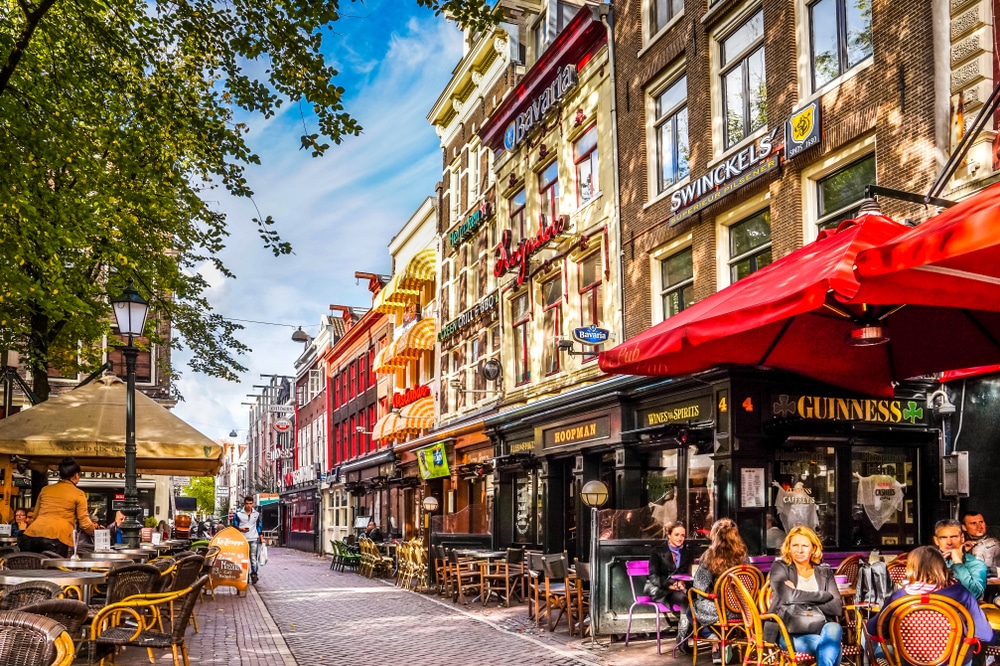
If you’re going out in Amsterdam, you’ll surely find yourself on Leidseplein at some point.
Directly on this central square are discos, cinemas, theatres, restaurants and a casino.
The most famous of Amsterdam’s coffee shops, the Bulldog, is on Leidseplein, while De Melkweg is a concert venue of real pedigree, hosting the Beastie Boys, U2, and Prince to name a few.
In summer Leidseplein is dominated by restaurant and cafe terraces, and crowds roll up to watch a colourful cast of jugglers, living statues, break-dancers and buskers do their thing.
As sights go, the neo-Renaissance Stadsschouwburg (1894) is an attention-grabber and is the former home of the National Ballet and Opera.
If AFC Ajax win something big, there’s usually a big celebration from the steps of this monument.
There’s an unforgettable image of Johan Cruyff holding the Cup Winners’ Cup aloft over the square in 1987.
23. Tropenmuseum
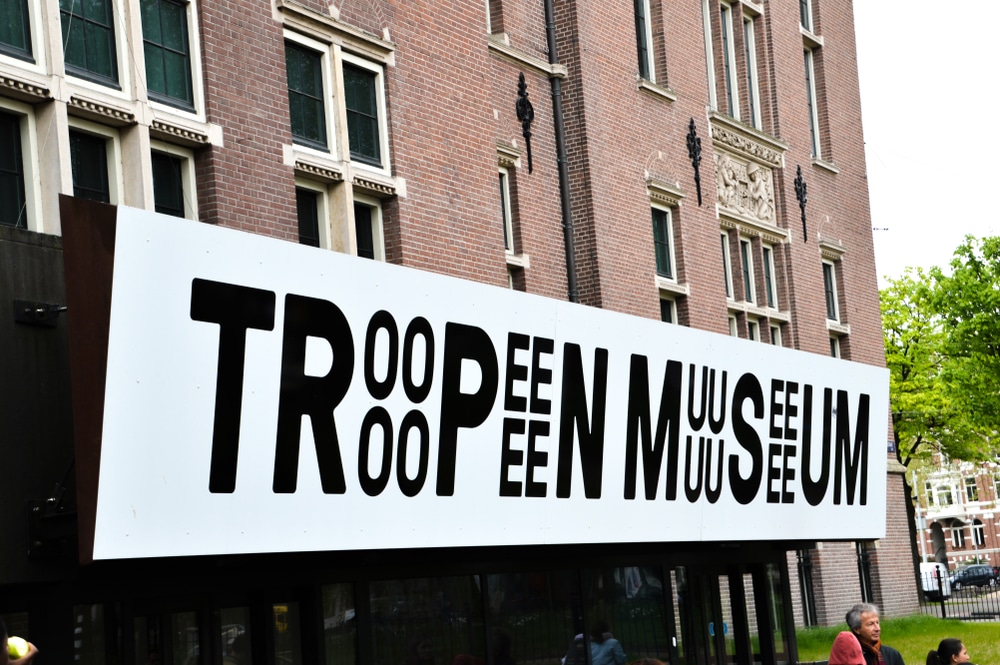
A nuanced and thoughtfully presented ethnographic museum, the Tropenmuseum is tour through the various cultures of the world.
The museum started life as a platform for the Netherlands’ colonial territories, but after Indonesia gained independence the scope switched to developing regions in general.
These include Latin America, the Caribbean, Southeast Asia, South Asia, West Asia and North Africa, all with an emphasis on tolerance and care for the environment.
There’s a mine of intriguing objects, photographs, sketches and footage helping to find global common ground in aspects of life like celebration, conflict, mourning and prayer.
The building is a treasure too, dating to 1926 and featuring the Lichthal (Light Hall), a massive central space with a grand stairway, all overlooked by galleries.
Book online: Tropenmuseum Entrance Ticket
24. Westerkerk
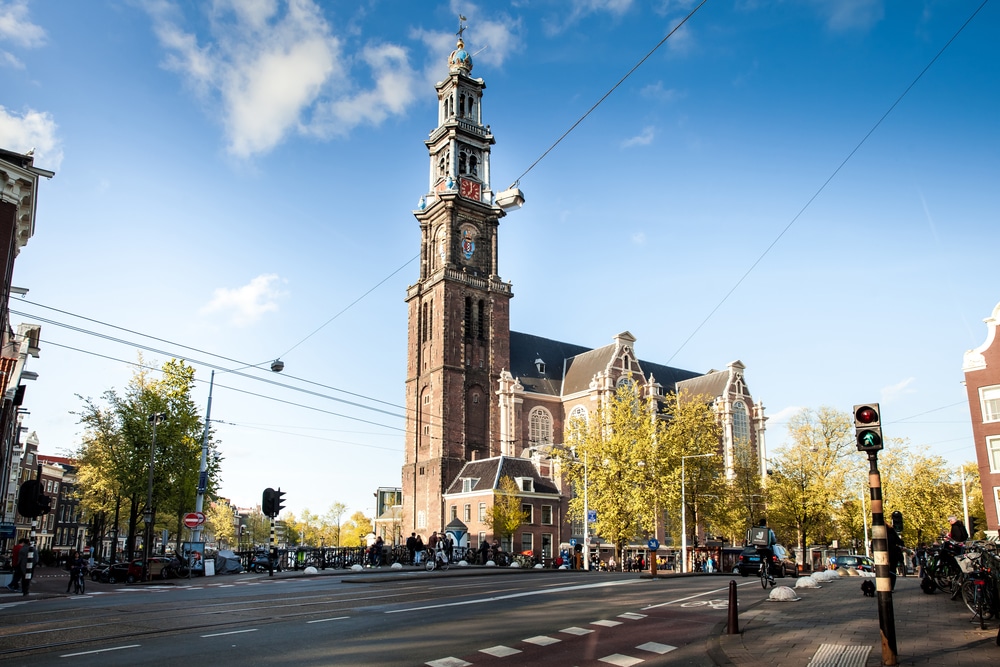
Amsterdam’s principal protestant church dates from the 1620s and was built in the most western part of the Canal Belt, beside the Jordaan.
At that time, not long after the Reformation, it was one of the city’s first purpose-built Protestant places of worship.
Walking around Amsterdam’s old centre, the church’s 85-metre tower, the highest in the city, will occasionally hove into view.
Anne Frank could see it from her secret annexe and mentioned the tower and its carillon several times in her diary.
Looking up from street level, the 51-bell carillon is just above the clock-faces, and the 14 largest bells in the set were cast by the greatest founder of the day, François Hemony in 1658. Rembrandt is buried at the Westerkerk, although the exact location of his tomb is unknown as he was destitute when he passed.
There’s a 20th-century memorial for him on the north wall, and every 15 July he is remembered with a lunchtime concert.
25. Portuguese Synagogue
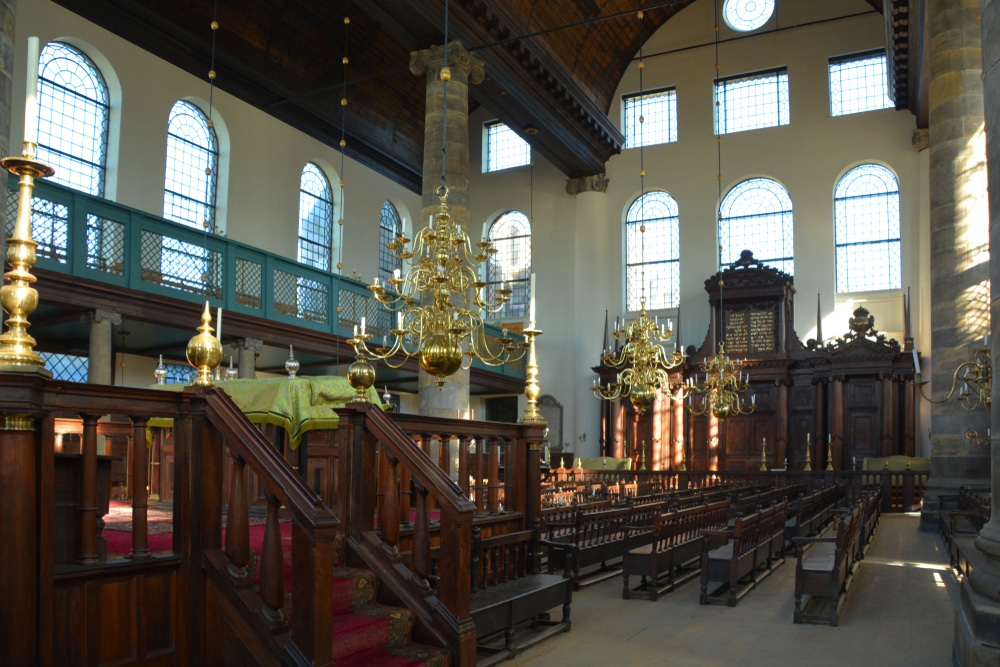
If one monument could sum up just what a melting pot Amsterdam was in the 17th century it’s this Sephardic Jewish synagogue.
After being expelled from Spain and Portugal, a Sephardic Jewish community flourished in the safety of Amsterdam’s tolerant environment from the 16th century onwards.
Initially worship was confined to relative secrecy, but as the 17th century wore on, synagogues were permitted in prominent places.
Completed in 1675 the Portuguese Synagogue was the largest in the world at the time, and one of the largest monuments in the city.
Even now, you’ll be bowled over by the dimensions of this Classical building (mimicking the demure Baroque style of the Protestant churches at the time) and can visit Sunday to Friday all year round.
Note the wooden ark and tebah, and the 12 columns holding up the women’s gallery, one for each of Israel’s twelve tribes.
26. Magere Brug
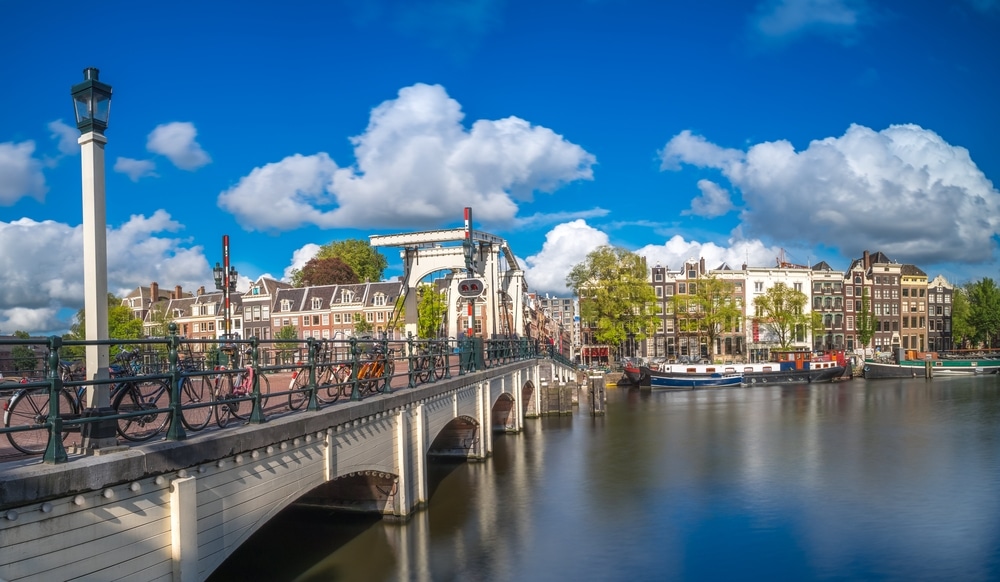
This imposing bascule bridge over the Amstel, known in English as the “Skinny Bridge”, may not look so slim today.
Because the name is a holdover from a 17th-century structure that was so narrow that two pedestrians would struggle to pass each other on the crossing.
Tradition has an alternative explanation, suggesting that the name comes from the Mager sisters, who lived on opposite sides of the Amstel and used their wealth to build the bridge so they could visit each other.
The original skinny bridge was demolished in the 19th century, and its successor from 1871 was replaced by the current Magere Brug in 1934. It’s a handsome landmark, especially at night when lit up by thousands of bulbs, and Bond fans may know it from Diamonds Are Forever (1971).
27. Hermitage Amsterdam
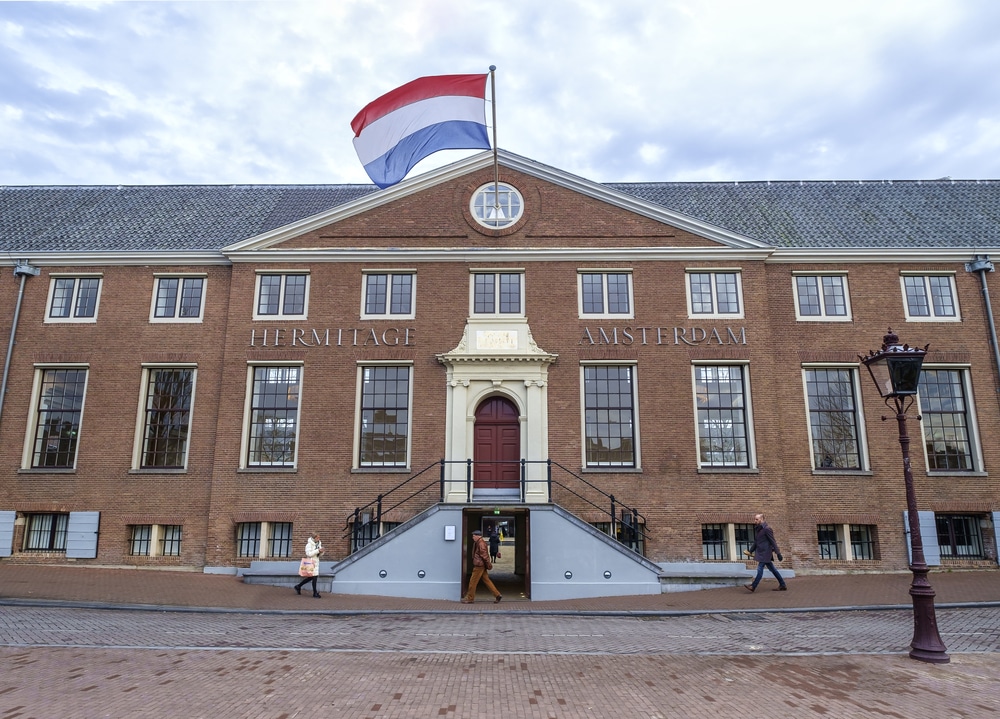
The largest satellite attraction for Saint Petersburg’s Hermitage Museum can be found at the riverside Amstelhof.
This fine building with an elongated Classical facade was built in 1682 as a charitable retirement home for women.
The last inhabitants departed for new accommodation in 2007, and over the next couple of years the Amstelhof became a mini-Hermitage.
There’s a long connection between Amsterdam and Saint Petersburg, as Peter the Great founded the city in 1703 after visiting Amsterdam and relied on Dutch knowhow to turn swampy ground into something habitable.
There are two permanent exhibitions here; one going into the history of the Amstelhof, and the other charting Netherlands-Russia relations.
The temporary exhibitions are vital.
In the second half of 2018 there was a show for 18th-century European Neoclassicism, and a set of 30 portraits from the Dutch Golden Age.
28. Amsterdam North Ferry
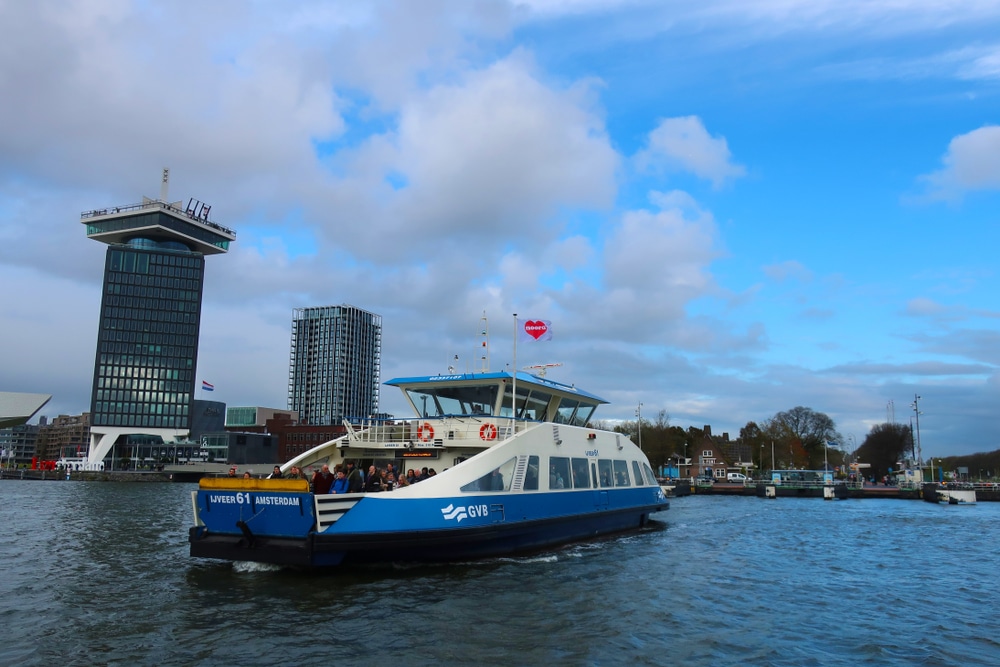
Amsterdam is a city with endless inspiration for free activities, and something that always catches newcomers by surprise is the free ferry 24-hour service over the IJ from the Centraal Station terminal.
Amsterdam-Noord is green and peaceful, for a respite from the tourism honeypots on the opposite shore.
The EYE and A’Dam Toren will literally be your first ports of call as you step off the ferry.
But you may want to bring a bike and see Amsterdam’s residential side in an area described as a “village within a city”. If you’re really committed you could cycle all the way to Durgendam, a quaint old village on the water.
A little closer, Noorderpark has an award-winning swimming complex and two community centres at repurposed gas stations.
29. EYE Film Institute Netherlands
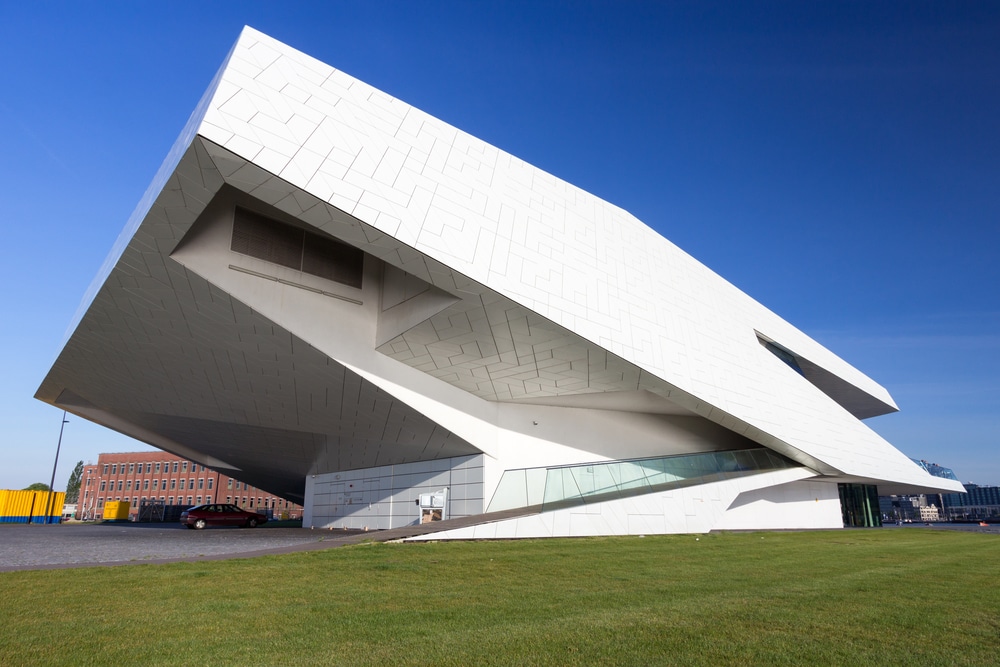
Impossible to miss on the other side of the IJ from the Centraal station, the EYE Film Institute Netherlands is in a bold white building designed by Delugan Meissl and unveiled in 2012. The institute came about after four film institutions, including the Dutch Film Museum, were rolled into one in 2009. You can get there via the free ferry across the IJ, a journey worth making, whether you want to check out the permanent and temporary exhibitions or catch some independent cinema (four screens), archive documentaries or classics from Tarkovsky to Rademakers.
The basement has a clever exhibition on the history of cinema, with interactive quizzes to keep kids on board, while there are thought-provoking multimedia art installations throughout.
The EYE’s restaurant is special, with views through floor-to-ceiling windows to the Centraal station.
30. A’Dam Lookout
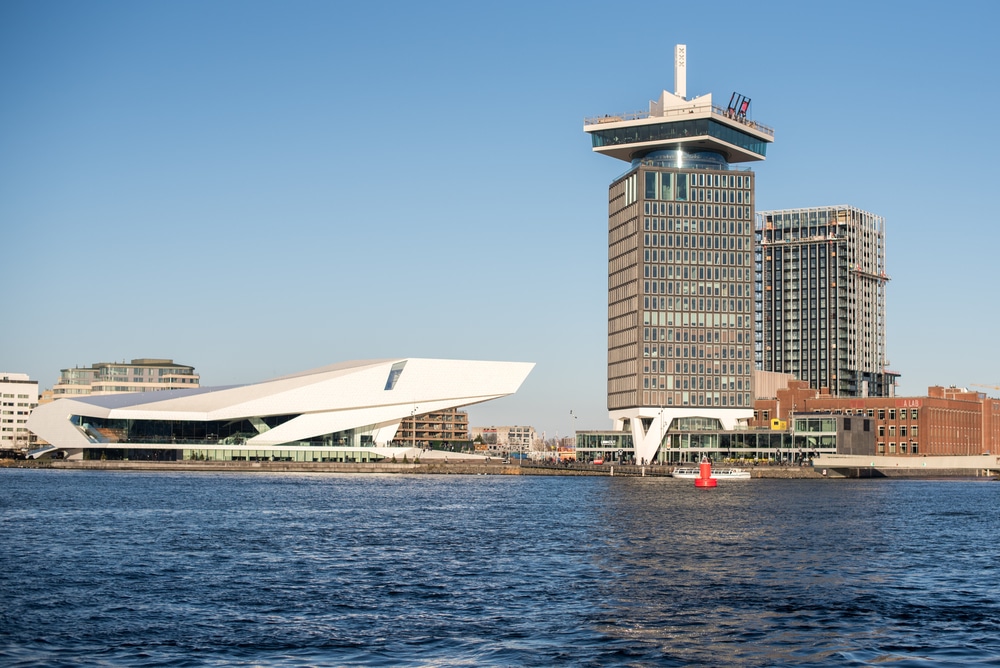
Reopened and launched as the A’DAM Toren after a two-year renovation, this landmark tower was built on the north shore of the IJ for Royal Dutch Shell in 1966. With 22 floors the tower is 100 metres high and commands a supreme view of the IJ, Amsterdam’s historic centre, it’s many canals and out across North Holland’s reclaimed polder landscape.
At the top there’s a smart interactive exhibition about Amsterdam’s culture and past, while in the revolving capsule on the 19th floor is Moon, a contemporary restaurant using local, seasonal ingredients.
On the floor above, at the observation deck, Madam, is a modern French and Mediterranean eatery.
Something to try before you eat anything is, “Over the Edge”, Europe’s highest swing, off the edge of the building and 100 metres over the ground.
Book online: A’DAM Lookout Premium Ticket Including 2 Drinks
31. Westergasfabriek
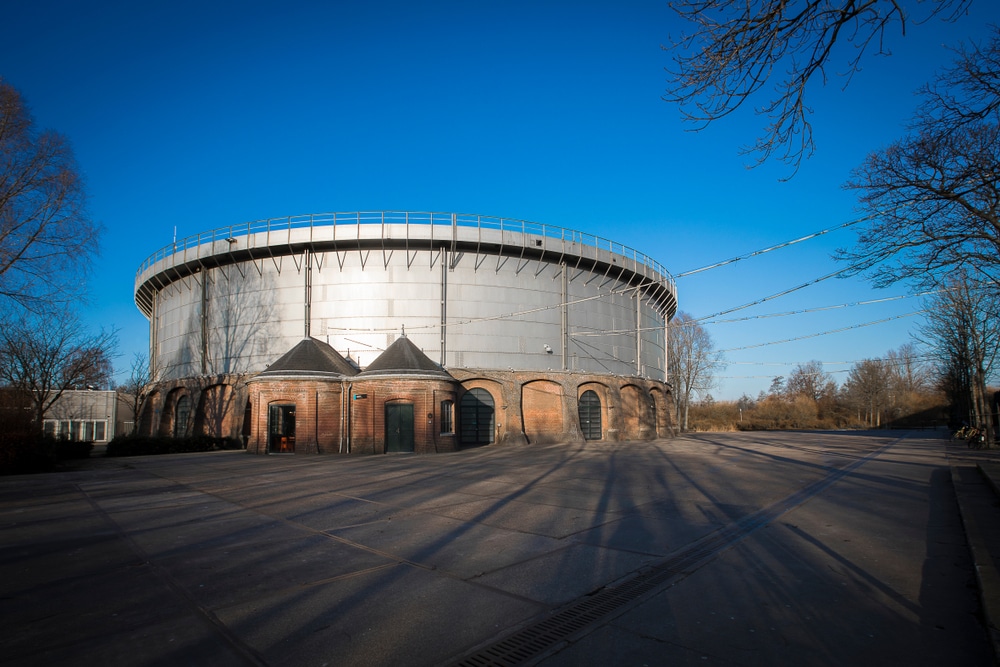
A set of late-19th-century industrial buildings on the edge of Westerpark was reworked into a cultural, shopping and dining venue in 2003. This was once Amsterdam’s gasworks, and the dignified old brick buildings are now hip restaurants, an arthouse cinema, microbrewery, design shops, fair trade food stores, a wine bar and exhibition spaces.
Even the gas holder has been repurposed, and with a capacity of 3,500 is now a spectacular space for club nights.
Any time of year there will be something going on at Westergasfabriek, whether it’s a film festival, exhibition or specialised food market.
32. Nederlands Scheepvaartmuseum
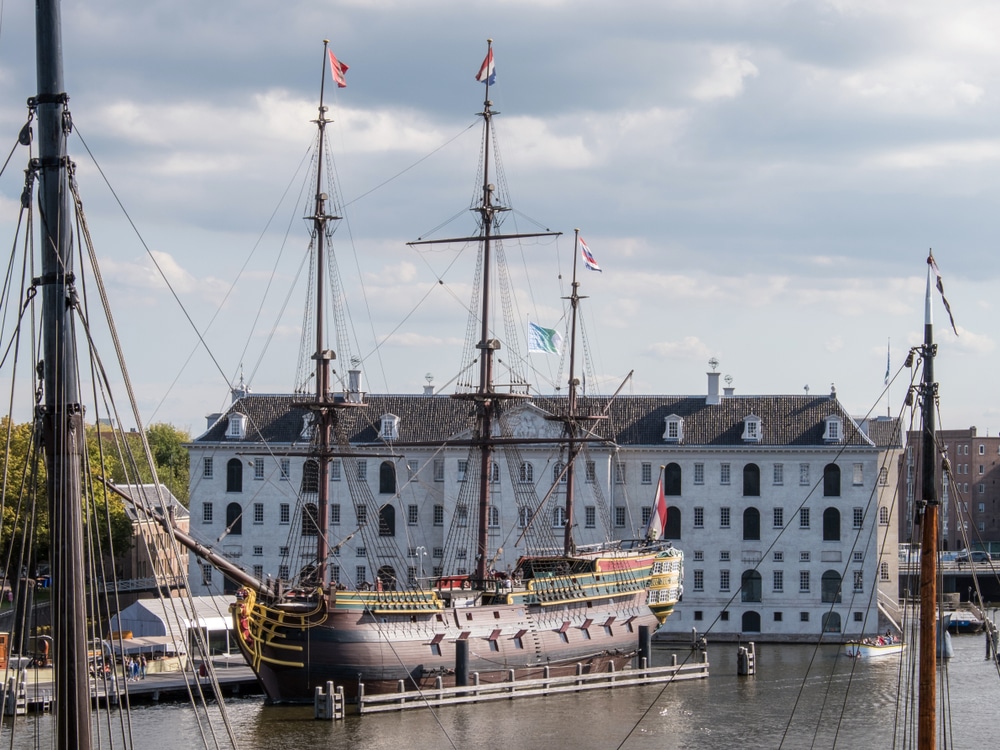
Set on some 18,000 wooden piles on an artificial island in Amsterdam’s Harbour, the National Maritime Museum is in the Dutch admiralty’s former main warehouse, constructed in 1646. Even now it’s a staggering technical feat, with an inner courtyard that has been covered with an immense glass canopy.
Since the Netherlands’ hegemony in the 17th century relied on maritime prowess, the museum inside is essential if you want to understand the dynamics of the Golden Age.
The museum shows how the sea has shaped Dutch culture over 500 years, with displays of maps by the eminent 17th-century cartographers Willem Blaeu and son, navigational instruments, maritime paintings, models of ships, weapons and lots more.
Moored beside the museum is a faithful replica of the Amsterdam, an 18th-century Dutch East India Company cargo ship wrecked in the channel in 1749 but rediscovered in 1969.
33. Royal Palace
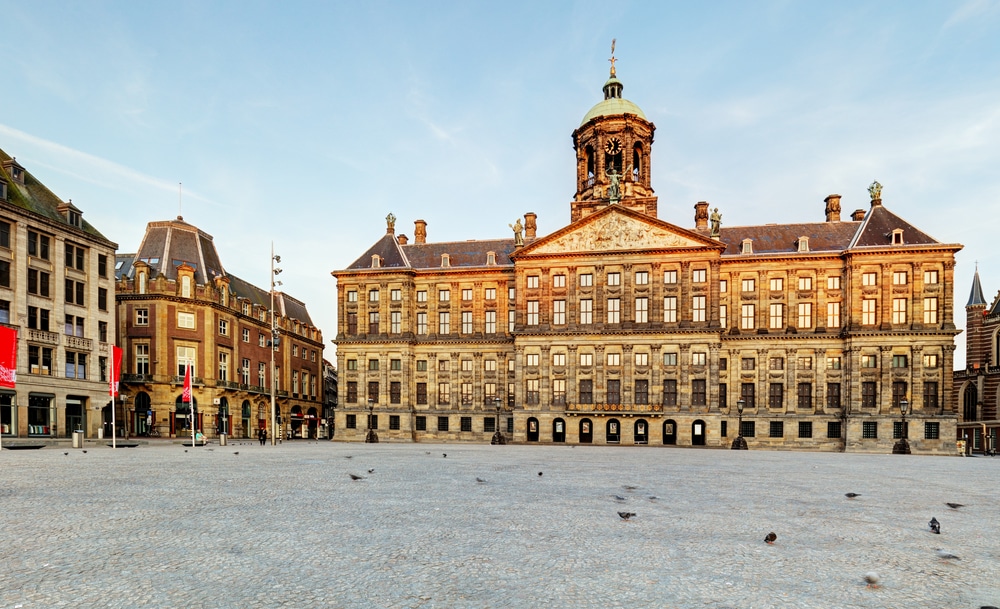
This expansive building on Dam Square wasn’t always a palace, as it was built as Amsterdam’s city hall in the middle of the 17th century.
Composed of yellowy sandstone shipped from Bentheim in Germany, the monument captures a city full of confidence and was believed to be the largest secular building in Europe at the time.
It was Louis Napoleon who turned the building into a palace in 1806, and there are ample reminders from the city hall days.
The sculpture of Atlas crowning the pediment symbolises Amsterdam’s central role in global affairs in the Golden Age.
The Burgerzaal, for Amsterdam’s all-powerful burgomasters, is a sublime marble hall, laid with maps by the Blaeus and has figurative sculptures of the four elements on its arches.
The Empire Style sculpture, furniture, chandeliers and bronze pendulum clocks of Louis Napoleon’s court are still in place and suffused with mythological symbolism.
Book online: Skip the Line Ticket & Audio Guide: Amsterdam Royal Palace
34. Moco Museum
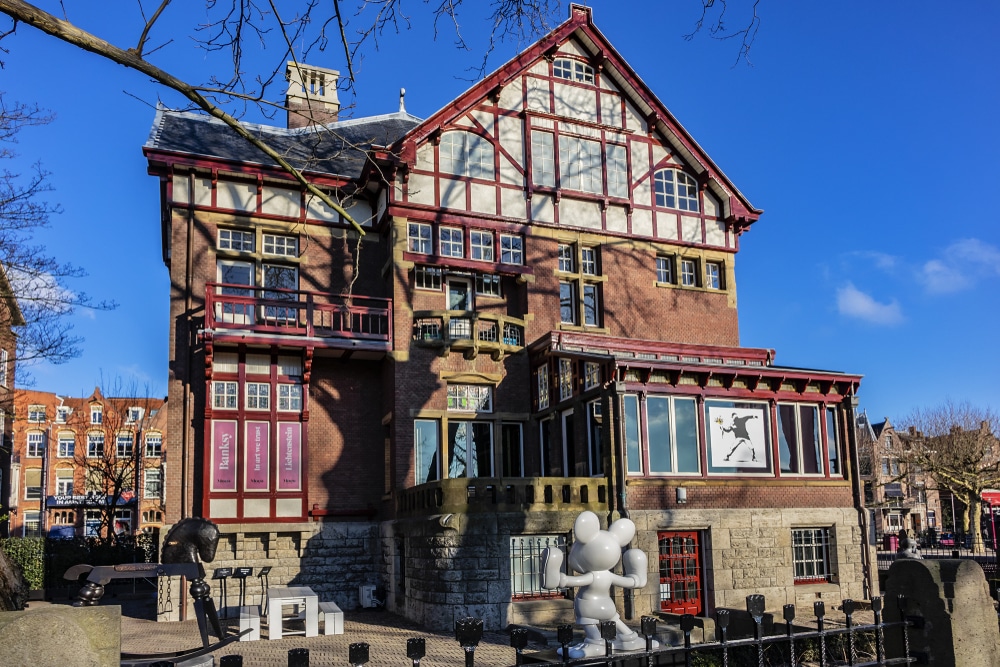
The well-connected art lovers Lionel and Kim Logchies founded this boutique contemporary art museum in 2016. Two decades worth of contacts have granted the couple access to some major pieces previously hidden away from the public, so you’re sure to see something new.
In 2018 there was an exhibition of works by Banksy, the first formal collection of his art in the world.
This included icons like the Flower Thrower and Girl with Balloon, all complementing the Banksy police van, owned by the museum and on show in the garden.
At the same time there was an interactive room with the work of pop artist Roy Lichtenstein rendered in 3D, and a show for the feted Iranian street artists Icy and Sot.
A word for the venue, which is a Jugendstil townhouse on Museumplein, designed in 1904 by Eduard Cuypers.
Book online: Moco Museum: Skip-the-Line Tickets with Banksy and More
35. Foodhallen

A former tram depot in the ultra-trendy Oud-West neighbourhood is the fitting location for an indoor food market (part of the larger De Hallen complex) with a diversity of little pop-up restaurants.
There are more than 20 in all, and the big choice means that even the pickiest eaters will find something to their taste.
People with a globetrotting palate will have to choose between Greek meze, temaki rolls, oysters shucked on the spot, American barbecue, Vietnamese summer rolls, falafel, dim sum, tapas, gourmet hot dogs, wood-fired pizzas… the list goes on.
Much of Foodhallen’s charm comes from its fun, convivial atmosphere, and things can get pretty lively here on a Friday or Saturday night.
Head up to the gallery for a great view of the hall.
Tip: List of Amsterdam Food Tours
36. Concertgebouw
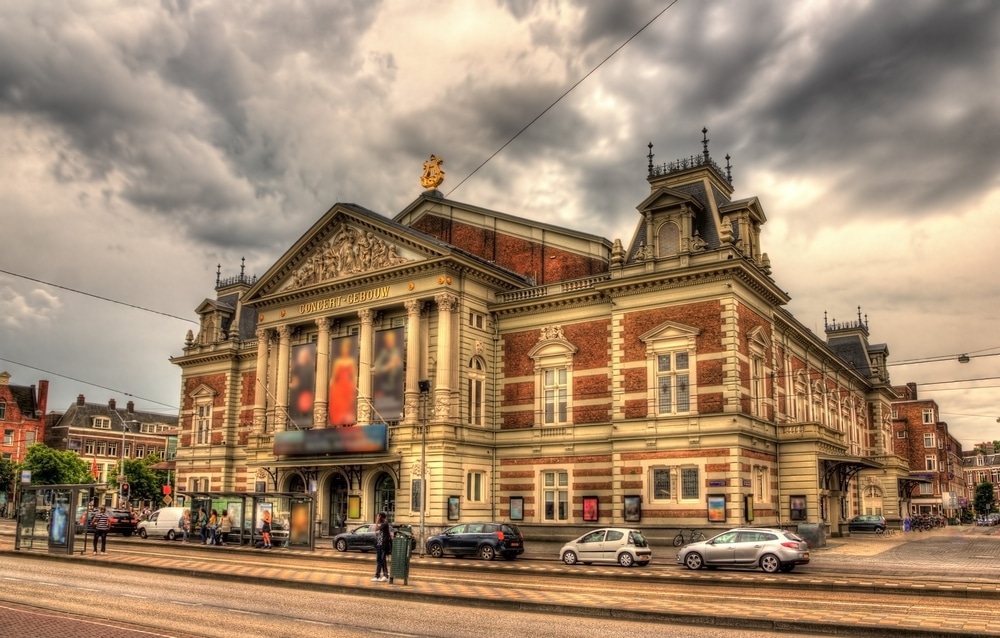
On its 125th anniversary the stately Concertgebouw concert hall on the Museumplein was bestowed the Koninklijk (Royal) prefix by Queen Beatrix.
And with good reason, because the Concertgebouw is one of the world’s great concert halls with a Main Hall fabled for its finery and acoustics perfectly suited to late-Romantic classical music.
So for a bit of Mahler and Strauss, check out the programme.
But you can also attend a free lunchtime concert in the Recital Hall on Wednesdays (July and August excepted). There are guided tours of the Concertgebouw on Sundays, Mondays, Wednesdays and Fridays, taking you to parts of the building you wouldn’t otherwise see, and passing on interesting stories from this monument’s 130-year past.
37. Albert Cuyp Markt
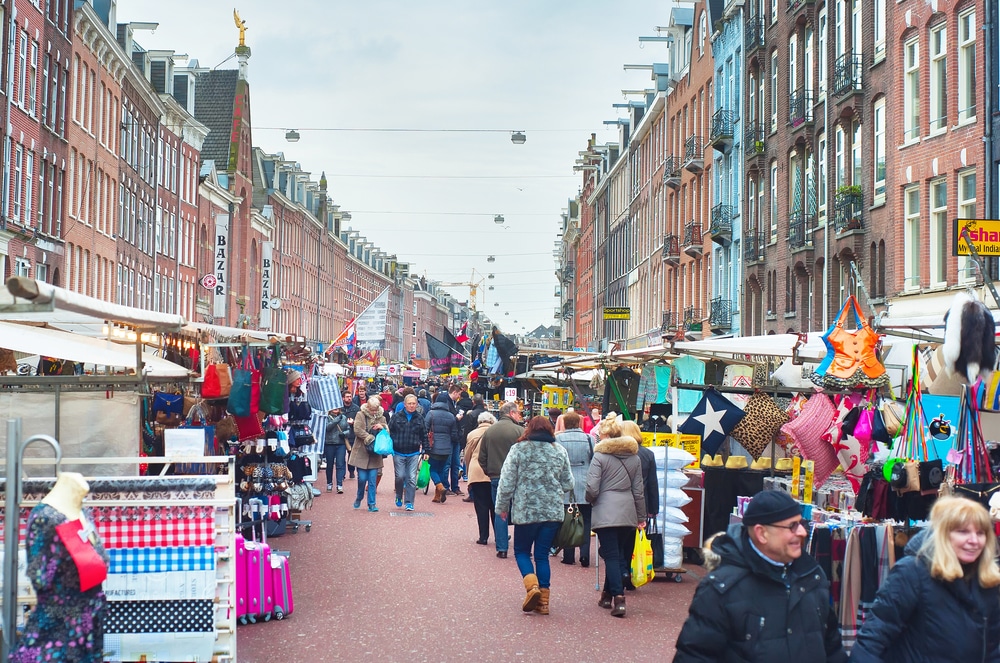
In Oud-Zuid’s De Pijp there’s a street-length outdoor market on Albert Cuypstraat, from Ferdinand Bolstraat to Van Woustraat.
The Albert Cuyp Market came together at the turn of the 20th century to bring some order to the hordes of traders and hawkers who would set up shop here.
Originally just a Saturday night affair, the market trades Monday to Saturday during daytime hours, with 300 stalls on both sides of the street completely shutting down traffic.
You can find it all here; fresh produce, cheese, herring, spices, fabrics, cosmetics, fashion accessories, but also Surinamese, Moroccan and Antillean specialities.
The high competition keeps prices low and there may not be a better place to see real Amsterdammers going about their day.
38. Fashion for Good
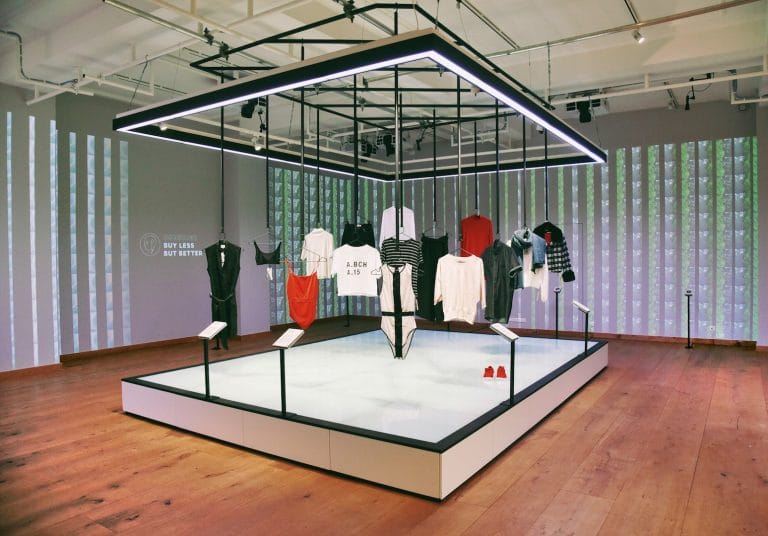
Right on Rokin in the centre of Amsterdam is the world’s first museum devoted to sustainable fashion innovation.
At Fashion for Good, which only opened in October 2018, you’ll be confronted by the absurd wastefulness of the fashion industry in the 21st century.
For instance, almost 60% of all clothing ends up in landfill or being burnt within one year of production.
Using installations made with found or cradle-to-cradle materials, Fashion for Good shows off the work of some 50 innovators who aim to right some of the industry’s wrongs.
Take Mycotex, which produces fabrics using myco-proteins, or Colorfix, creating dyes from engineered microorganisms.
You’ll find out about biodegradable glitter and polyester, lifelike leather made from apples and see how blockchain technology is changing production.
Everything in the museum’s shop is sustainable, and the Design Studio lets you create your own sustainable t-shirt, printed on site.
39. Hortus Botanicus
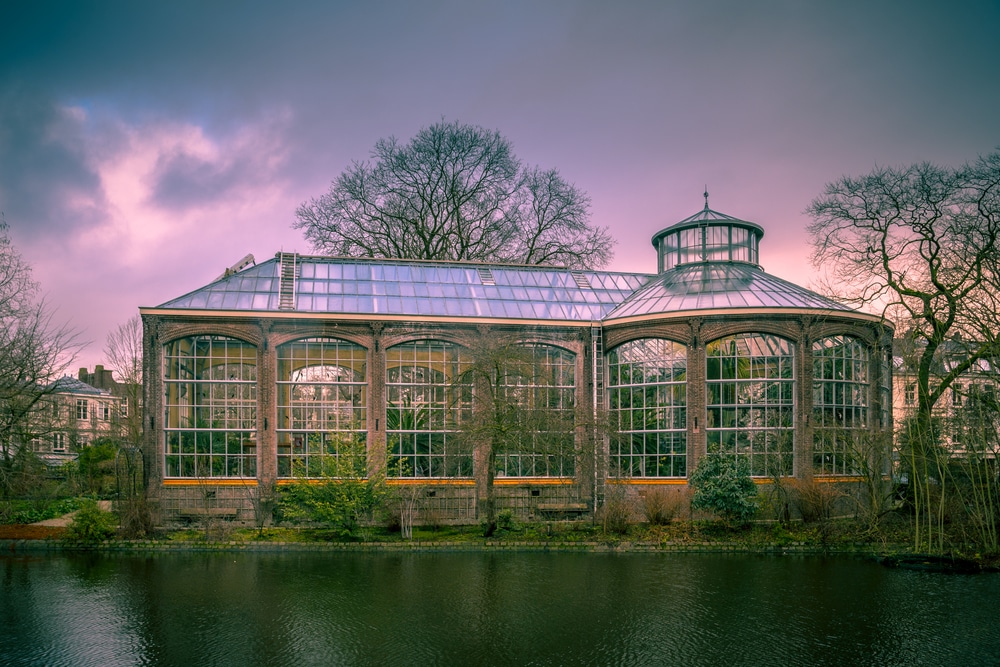
The Plantage neighbourhood was planned as an eastern extension of the Canal Belt, but lack of demand for housing in the 17th century allowed this corner of the city to stay leafy and spacious.
There’s a surplus of visitor attractions in this corner of Amsterdam.
One of the most vital is Hortus Botanicus, founded in 1638 and among the oldest botanical gardens in the world.
In those early years the garden grew medicinal herbs for doctors and pharmacists at a time when plague outbreaks were still common.
Hortus Botanicus moved to its current location in 1682 and was soon planted with species gathered from all ends of the earth by the Dutch East India Company.
More than 6,000 plant species grow at Hortus Botanicus today, and remarkably, a single coffee plant in this collection lead to widespread plantations around the world.
Don’t miss the 17th-century hexagonal pavilion, or the cycads in the Palm House (1915), built in the style of the Amsterdam School.
40. Amsterdam Museum
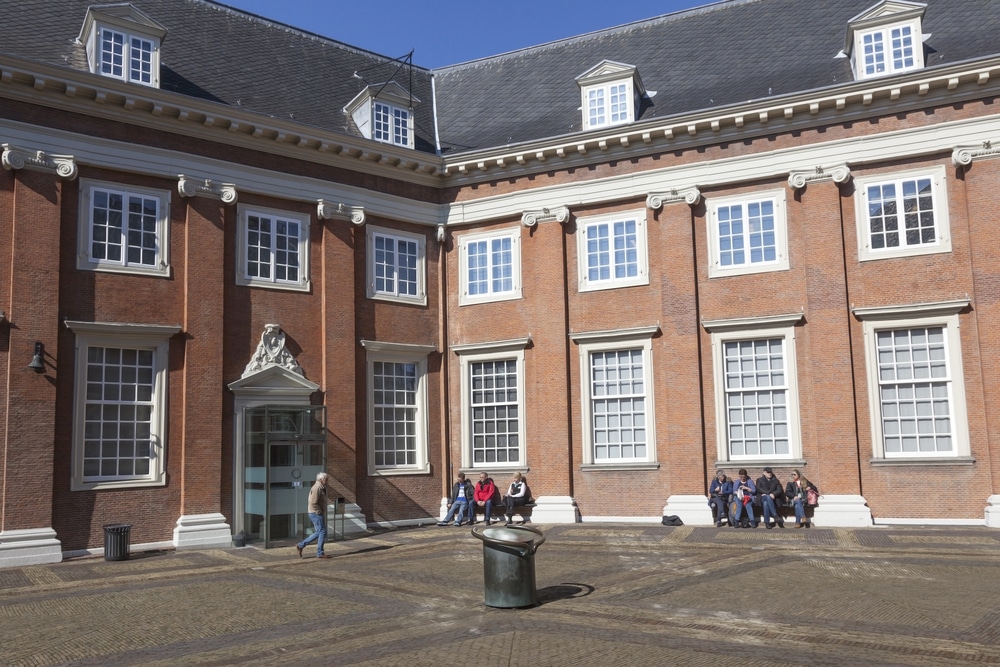
You couldn’t be blamed for wanting to know more about a city built on stilts and renowned for free thought, tolerance, Johan Cruyff, the Dutch East India Company, architectural innovation, a famous Red Light District and much more.
You can pull on all of these threads and many more at the Amsterdam Museum.
The setting is a former convent that became an orphanage during the Reformation.
For a whirlwind tour through Amsterdam’s past, Amsterdam DNA is an hour-long experience using interactive stations, specially selected artefacts and ambient effects.
World – City is a new permanent exhibition exploring Amsterdam’s relationship with the rest of the world down the centuries.
One exceptional piece is the Medieval aerial map from the Middle Ages, and the painting The Dam by the leading Amsterdam Impressionist George Hendrik Breitner.
Book online: Amsterdam Museum Entrance Ticket
41. Joods Historisch Museum
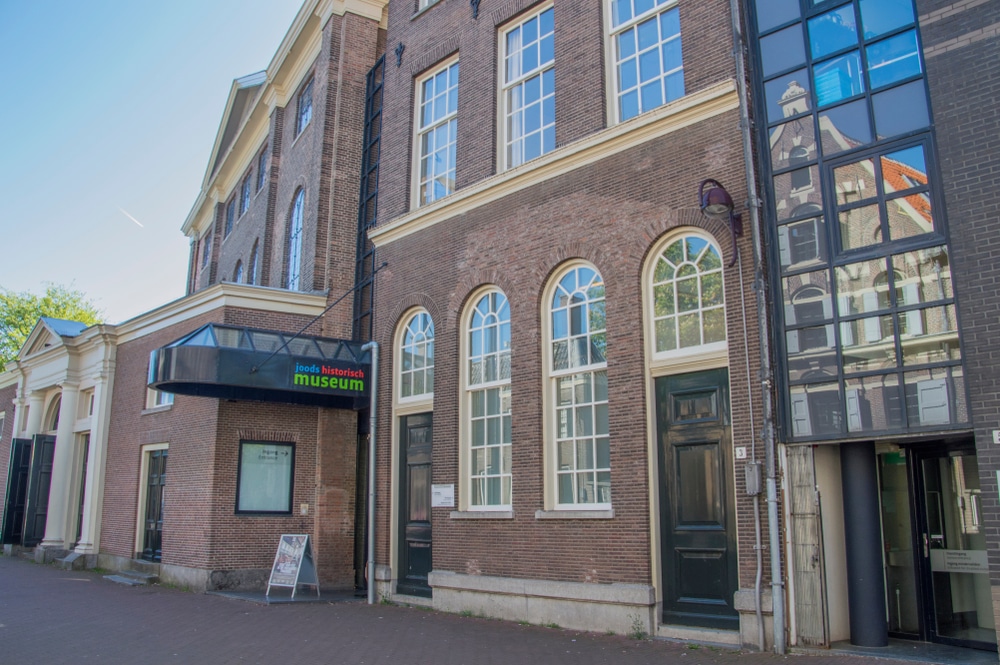
The only museum dedicated to Jewish history in the Netherlands is in a complex of four synagogues dating back to 1671, opposite the Portuguese Synagogue.
Joint tickets are sold for these attractions, and the Joods Historisch Museum gives an enthralling account of 400+ years of Judaism in Amsterdam.
These buildings had been unused by the Jewish community from the Holocaust up to the museum’s establishment in 1987. The collection of ceremonial objects, art and archaeological finds is enormous, and only a small fraction can be shown at one time, along with important exhibitions, often delving into the community’s persecution in the Second World War.
There’s also a media library, with books, music, magazines, film, brochures and photography, open to the public since 1987. A wonderful touch is the Children’s Museum, where kids can go inside a Jewish household, baking challah in the kitchen, learning to write their names in Hebrew and playing traditional musical instruments.
Included in: Jewish Cultural Quarter Full-Day Tickets
42. ARTIS Amsterdam Royal Zoo

Founded in 1838, this venerable institution in the Plantage neighbourhood is the oldest zoo in Amsterdam and also the oldest in the Netherlands.
So some of the charm of Artis comes from its historic buildings, like the library (1867) and aquarium (1882). Children of course will be thrilled with the animal collection, which runs to as many as 900 species.
Just to skim over a few, there are Asian elephants, chimpanzees, giraffes, caiman, a large assortment of turtles, tortoises, snakes and lizards, as well as predators like jaguars, lynxes, Alaskan wolves and lions.
Artis has a botanical appeal too, with more than 200 tree species, and an oak in the chimpanzee enclosure thought to be at least 250 years old.
Check the website for the planetarium schedule and for a timetable of keeper talks for griffon vultures, butterflies, African penguins, gorillas, red ruffed lemurs, sea lions and more.
Book online: ARTIS Amsterdam Royal Zoo: Skip-the-Line Admission
43. Verzetsmuseum
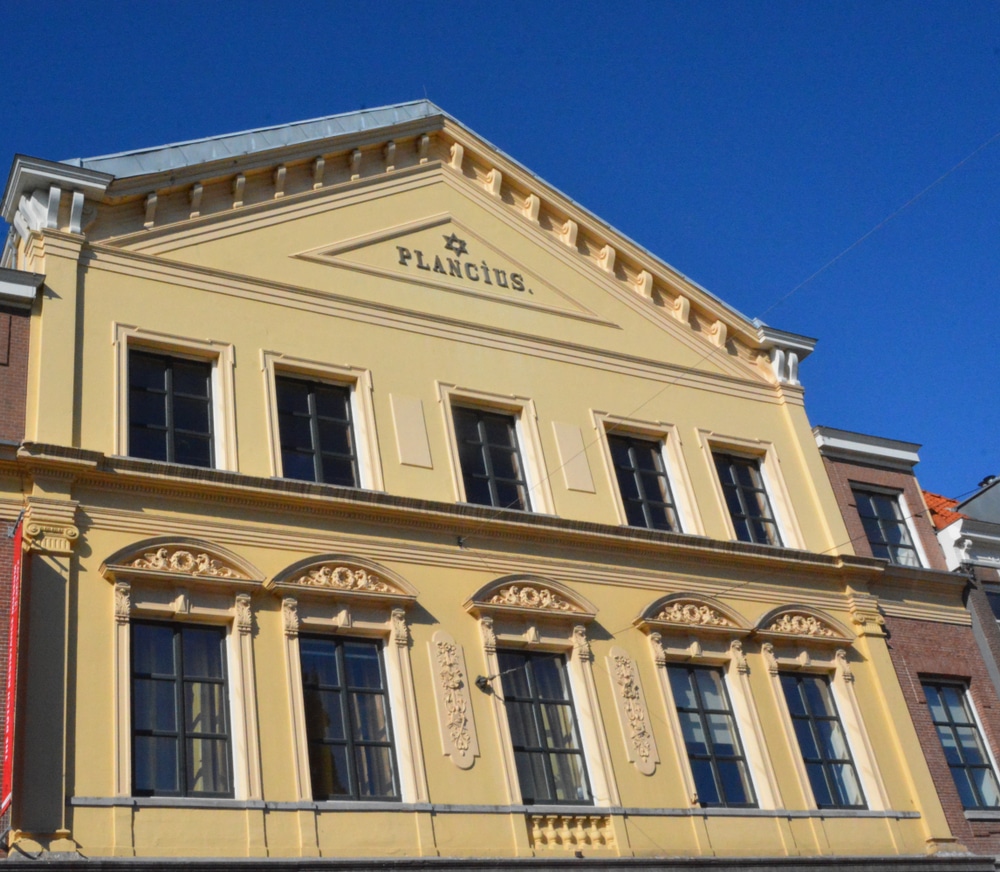
Facing the zoo is a museum about the Dutch Resistance in a grand building raised for the Jewish Singing Society in 1876. Neatly designed, and using lots of multimedia, exhibitions at the Verzetsmuseum recount the efforts made to disrupt German occupation.
At Risk of Explosion! you can find out about an audacious attack on the Municipal Register in 1943. A group of artists and students gained access by dressing up as police, leaving behind a bomb which partially destroyed the records of the 70,000 Jews living in Amsterdam.
There’s also a more general chronology of the Second World War in the Netherlands, and the many different ways that ordinary Dutch citizens resisted, from strikes, to espionage, helping people hide and forging documents.
44. Johan Cruyff Arena Tour
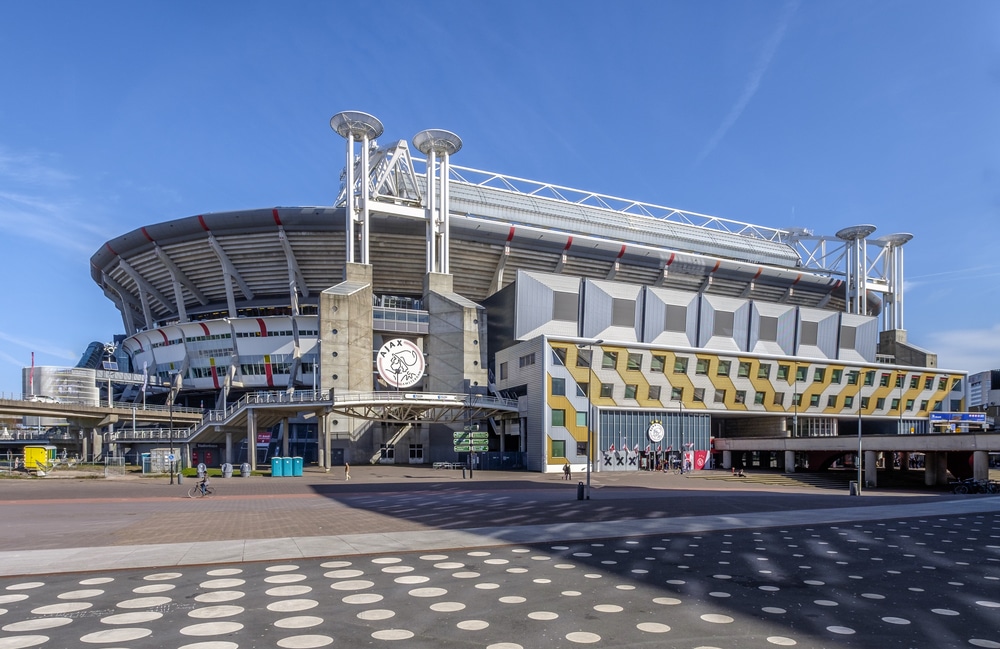
In 2018 the Amsterdam ArenA, home of AFC Ajax was renamed in honour of fabled former player and manager Johan Cruyff, who passed away in 2016. For students of the beautiful game, Ajax will always be fascinating, as the club that gave the world Total Football in the 1970s and continues to produce some the world’s most exciting young talent.
This 55,000-seater stadium was completed in 1996 and included a few innovations like a fully retractable roof.
Head here for a 75-minute all-access tour (the Ajax dressing room is off-bounds on match-days), taking you to the tunnel, dugout, the Ajax Gallery of Fame, the press conference room, the stadium’s control room and up to the highest seat.
Book online: Johan Cruijff ArenA Stadium 75-Minute Tour
45. TonTon Club West
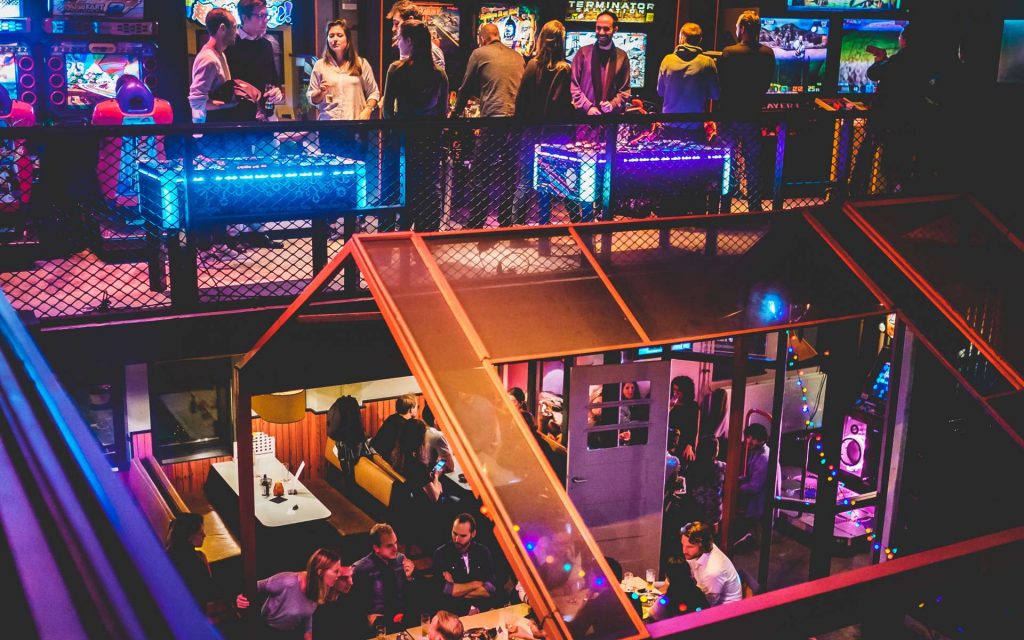
The Zuiverlingshal (Refinery) at Westergasfabriek houses one of three branches of a grown-up arcade concept that has taken Amsterdam by storm.
Along with old-school coin-op arcade games there’s air-hockey, pinball and token-redemption machines.
It’s like stepping into a grown-up version of an arcade from an 80s teen movie, with Japanese flourishes, ramen burgers, Dance Dance Revolution, rhythm games like Taiko no Tatsujin and no shortage of frantic button mashers.
You can order a boozy milkshake, nurse a Japanese whisky, and when the weather’s good you can hang out on the terrace.
46. Museum Het Schip
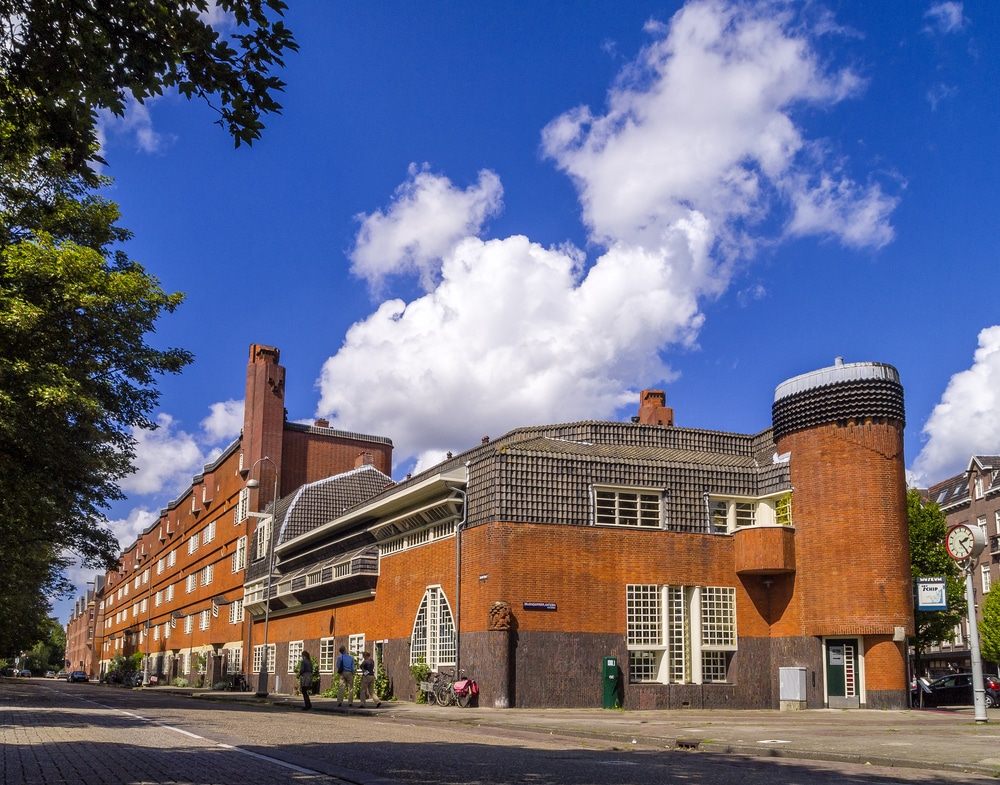
The outstanding example of the Amsterdam School of Expressionist Architecture lies just across the tracks from the Westerpark.
Designed by Michel de Klerk, Het Schip (1919) is still a thrill to behold a century later for its unconventional form.
It still fulfils its intended purpose, as social housing, but also contains a meeting hall, while its former post office became a museum to the Amsterdam School in 2001. This recalls the history of the movement, from 1910 to 1930 and explains the design and construction of the Het Schip (The Ship in English), a real architectural wonder.
After seeing the museum you’ll spot the Amsterdam School’s curving lines all over the city.
Also be sure to take a walk around the neighbourhood, for more architecture of this style and to see a side to the city not usually on tourists’ radars.
47. Give Herring a Try
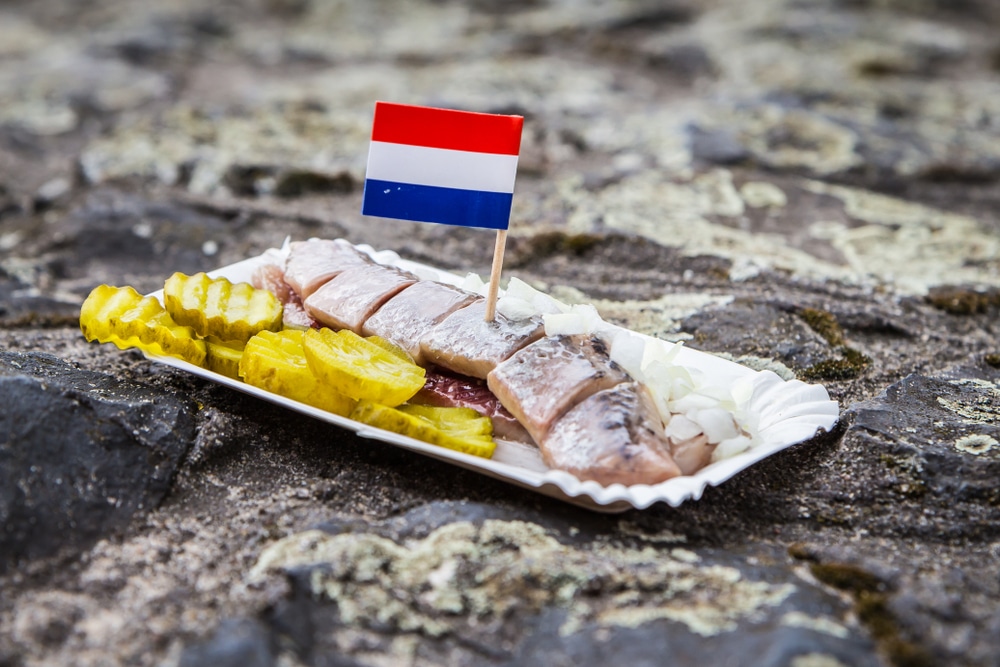
As Dutch as it gets, soused herring now has a European TSG designation (Traditional Specialities Guaranteed). The flavour of young herring ripened in a brine solution may not appeal to people who haven’t grown up with it, but you won’t know if you like it until you try it.
The best herring is Hollandse Nieuwe, which is caught between mid-May and late-June at a time when the young herring is neither too thin or fat.
The Amsterdam way to enjoy this street food is in slices on a bed of diced raw onion and with pickles on the side, either on a paper plate or in a bread roll.
One of the most prominent spots is Stubbe’s Haring, on the bridge across the Singel, a moment from Amsterdam Centraal station.
48. Bloemenmarkt
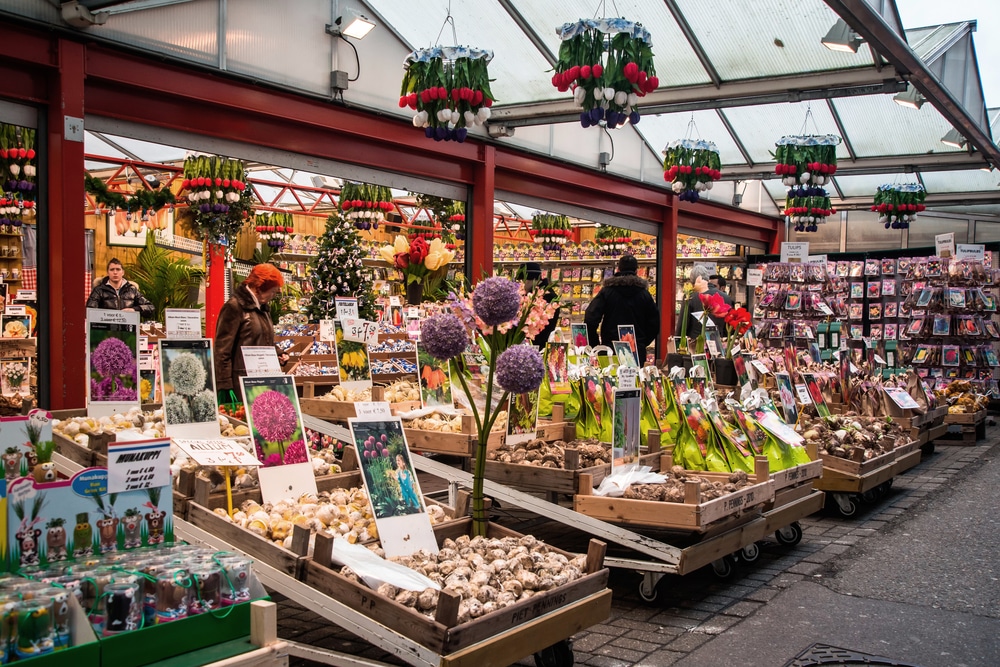
On the Singel canal between Koningsplein and the Muntplein is the world’s only floating flower market.
Since 1862 traders have been selling cut flowers and bulbs here from houseboats.
In days gone by the flowers would make their way here from the countryside by boat on the Amstel River, which explains this waterborne setting.
These barges are now fixed, and have glass canopies to keep things humid.
These mirror the greenhouses right across Holland, producing daffodils, orchids, carnations, violets, geraniums, snowdrops and of course tulips, even out of season.
The Bloemenmarkt sells bulbs all year, so you can grow your own, while tulip season tends to fall between the middle of April and start of May.
This is a fine time to hop on a train to see the spectacular spring displays at the Keukenhof garden in Lisse.
49. Head for the Beach
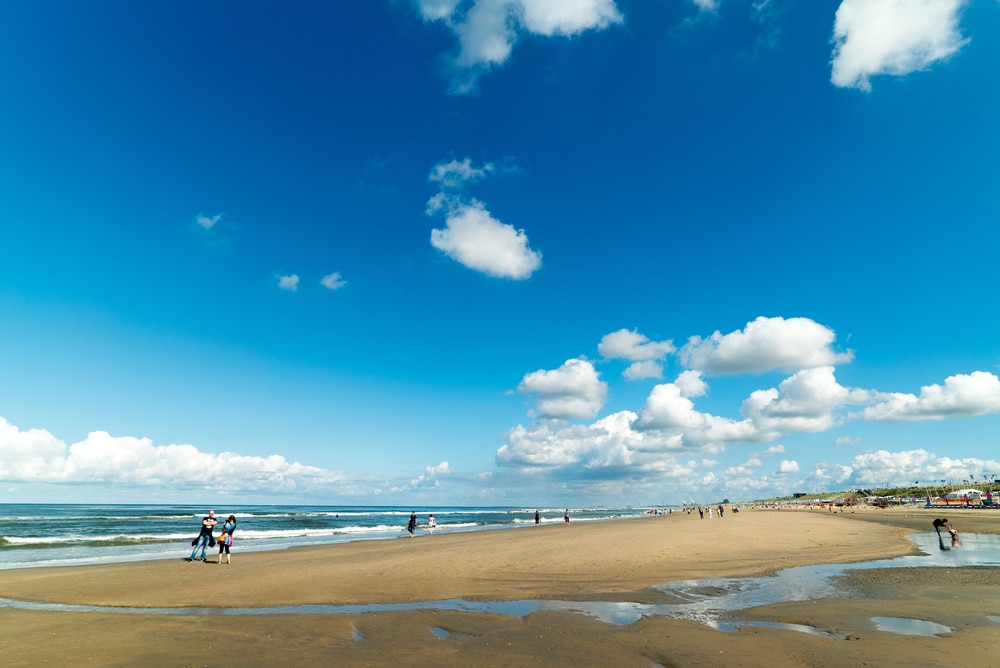
The dense Dutch railway network means that North Sea coast resorts like Zandvoort and Scheveningen are genuine day-trip options from Amsterdam in summer.
But curiously, you can also hit the beach without leaving the city, at a host of man-made urban beaches attached to bars and restaurants.
Strand Zuid at Europaplein has more than 2,000 square metres of soft sand, where you can sip a cocktail on a hammock or sun lounger.
You can also cross the IJ once more to Pllek at NDSM in Amsterdam-Noord, which has a heart-rending view of the city and a sustainable outlook to go with it.
Three quarters of Pllek’s menu is vegetarian, and along with live music there are yoga classes, mini festivals, workshops and art exhibitions on the beach.
50. Brouwerij ‘t IJ
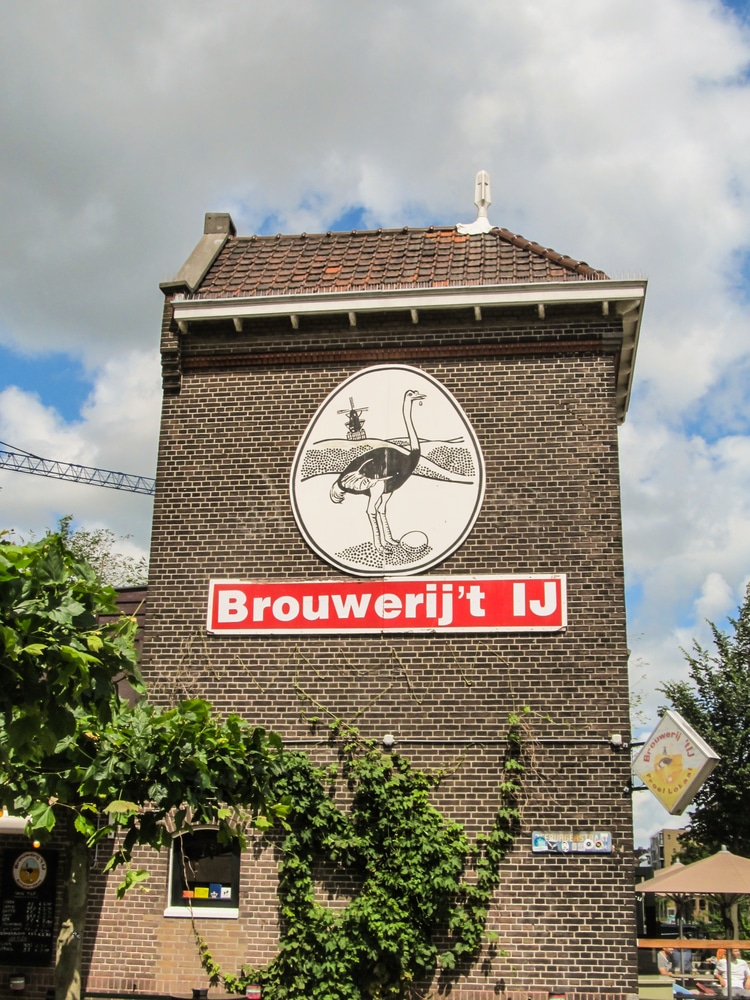
Founded in 1985, Brouwerij ‘t IJ came with a wave of local breweries catering to people who were dissatisfied with beer produced by the Netherlands’ corporate breweries.
It was set up on Funenkade, in the shadow of De Gooyer, the tallest windmill in the Netherlands.
The brewery makes eight highly-rated standard beers, including a pilsner, IPA, white beer and dark beer.
You may be surprised by the low price, and the portions are small enough that you might be able to try most of the range if you go slowly.
Classic Dutch pub snacks like Ossenworst (raw beef sausage) and boiled eggs make for satisfying accompaniments.
If you’re interested in how water, hops, malt and yeast combine to make this nectar, there are 20-minute brewery tours from 15:30 on Friday, Saturday and Sunday.
